

40 Best Science Experiments & Projects for Middle School
Welcome to our curated collection of top science fair projects and experiments, perfectly tailored for the inquisitive middle schoolers. Our collection offers hands-on activities that will captivate young minds and ignite their passion for learning.
Science fairs during middle school years are less about competition and more about fostering a love for exploration, experimentation, and the thrill of the “Eureka!” moment. That’s why we have ensured that all the experiments on our list are fun and easy.
Through hands-on experimentation, students can gain a deeper understanding of scientific concepts, build confidence in their abilities, and cultivate a lifelong passion for learning.
1. Crushed Can
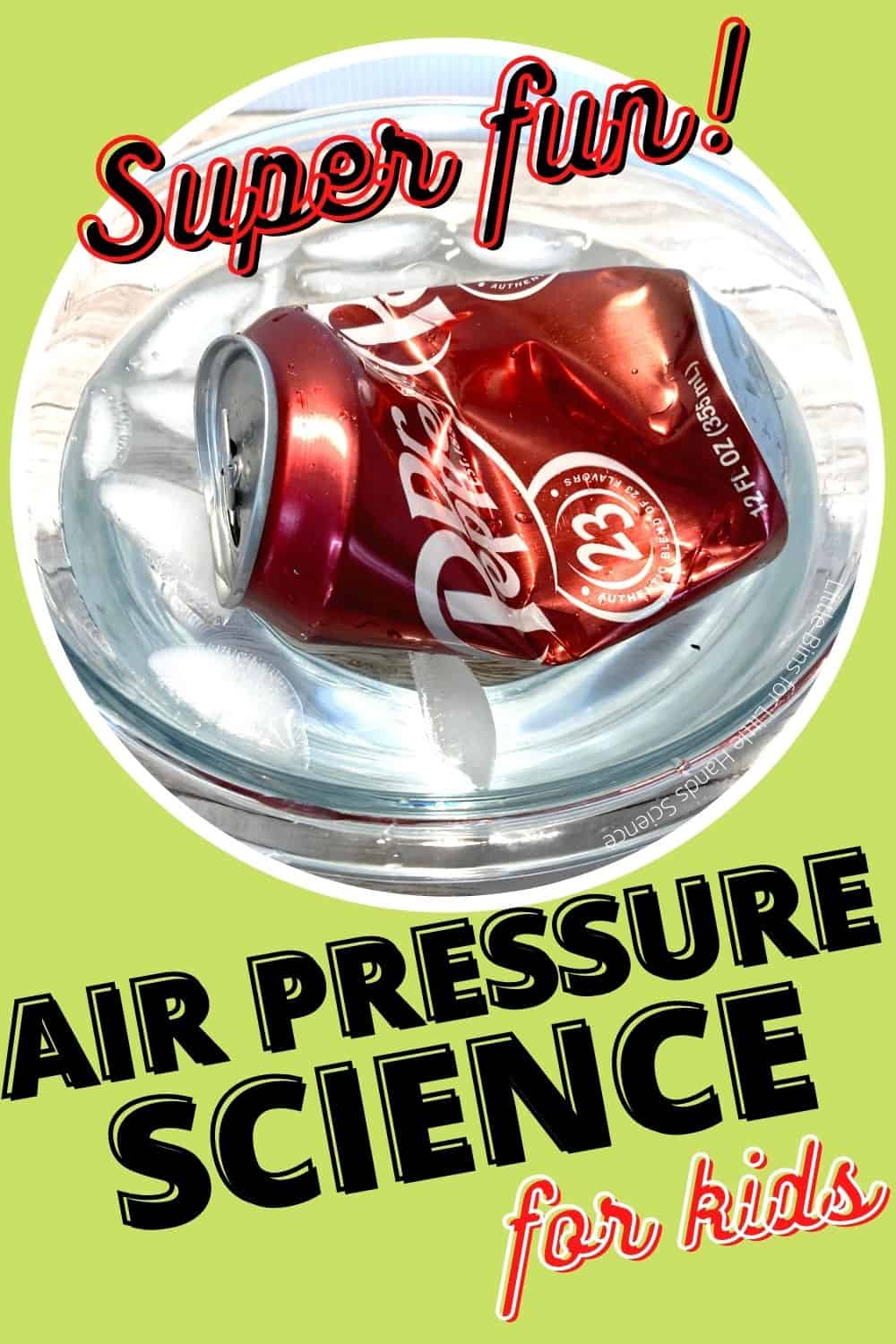
Students will be amazed as they witness an ordinary can being transformed before their very eyes. By simply heating it and then rapidly cooling it, the can will be crushed as if by magic!
Learn more: Little Bins Little Hands
2. Water Bottle Rockets
In this engaging activity, students will have the opportunity to design, build, and launch their very own water-propelled rockets.
By adjusting variables like water level and air pressure, they’ll witness firsthand how these factors impact the rocket’s flight path and distance.
3. Cabbage Ph Indicator
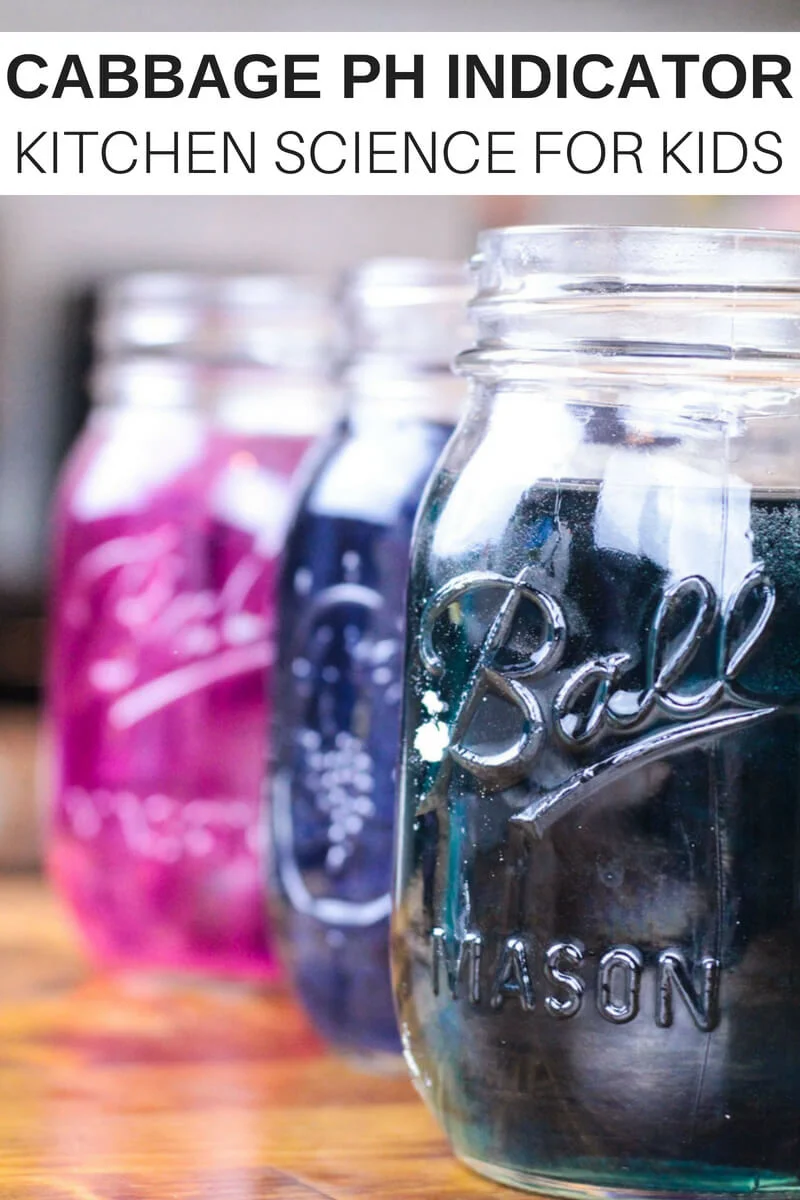
In this middle school science project, students will use red cabbage as a natural pH indicator to test the acidity or alkalinity of various household substances.
Learn more: Cabbage PH Indicator
4. Build a Solar Oven
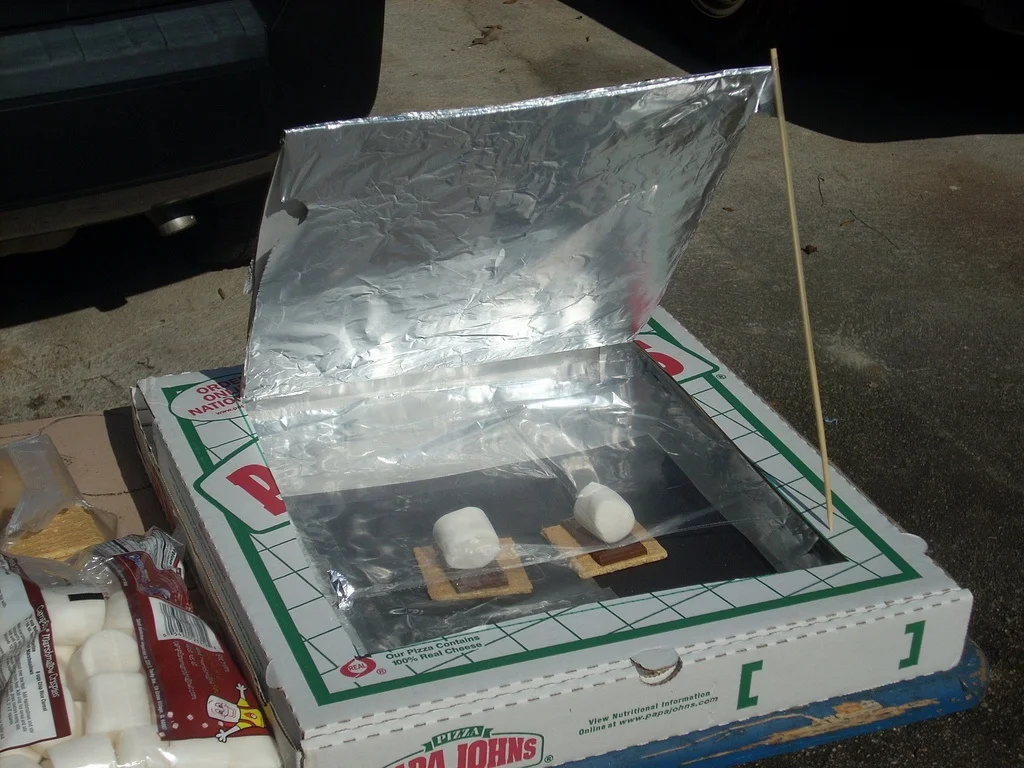
By building these ingenious devices using simple materials, they will discover the incredible potential of renewable energy and its practical applications in everyday life.
Learn more: Solar Oven
5. Build a Helping Hand
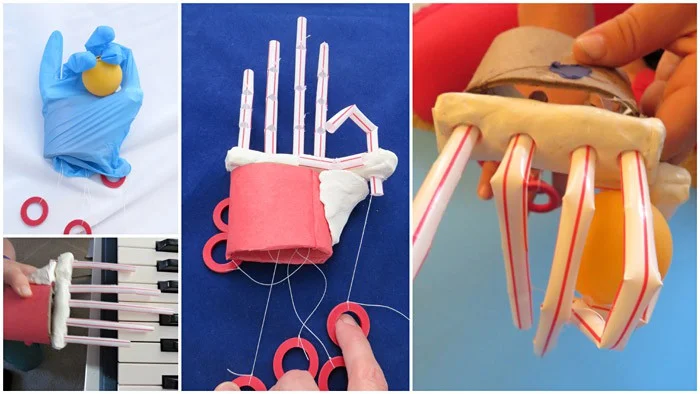
In this captivating middle school science experiment, students will have the opportunity to construct their very own “Helping Hand” device.
Learn more: Science Buddies
6. DIY Lung Model
This captivating middle school project offers an exciting hands-on opportunity to explore the inner workings of our respiratory system.
By creating their own lung models using simple household materials, students will gain a deeper understanding of how our lungs function and the vital role they play in our bodies.
7. Flying Tea Bag

By harnessing the power of convection currents, students will learn about the fascinating relationship between heat and air pressure.
Learn more: Flying Tea Bag
8. Egg Float Experiment
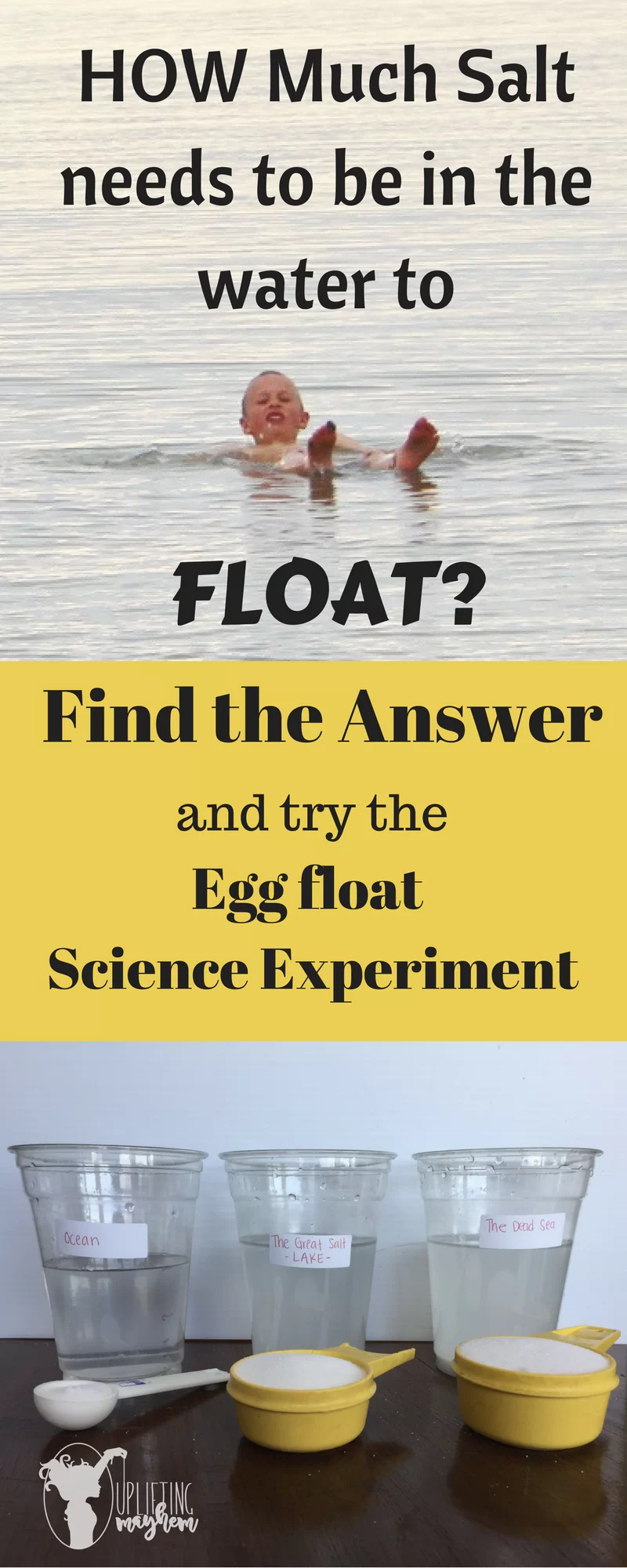
In this captivating middle school science project, students will unlock the mysteries of density and water displacement while discovering the fascinating properties of eggs.
Learn more: Egg Float Experiment
9. Popsicle Stick Chain Reaction
This captivating middle school project is all about the magic of potential energy and kinetic energy. By carefully setting up a series of interlinked popsicle sticks, students will create a mesmerizing chain reaction that ripples through the entire structure.
10. How to See Sound
As they watch sound come to life through colorful visualizations, students will develop a deeper appreciation for the profound impact of sound in our daily lives.
11. Orange Peel Plate Tectonics
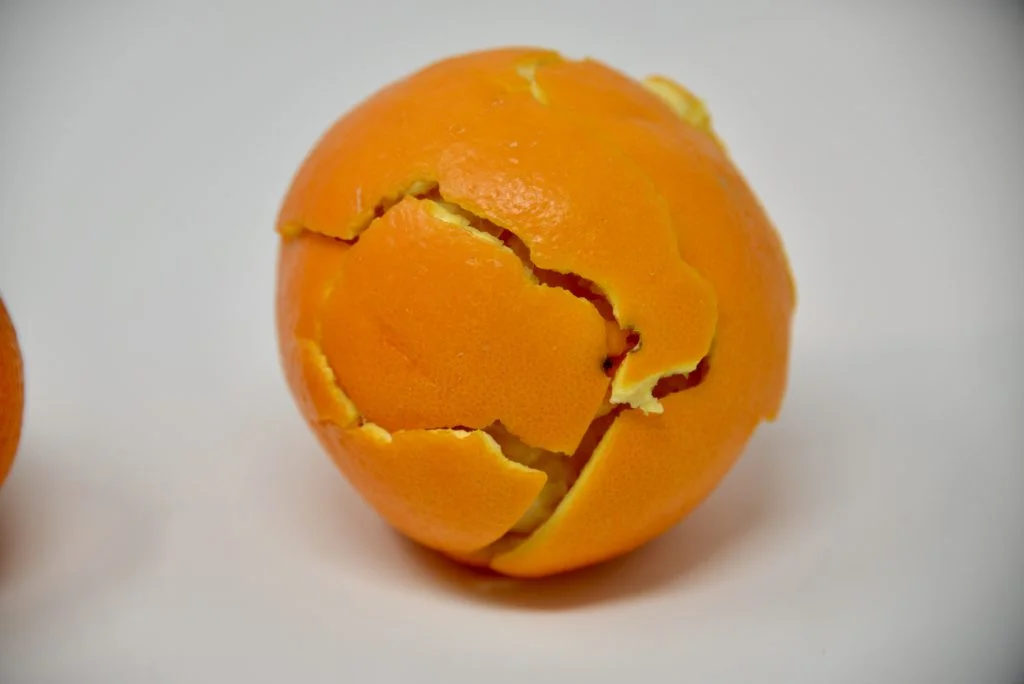
In this captivating middle school project, students will learn about the dynamic of Earth’s crust and explore the powerful forces that shape our planet’s surface.
12. Heart Pump
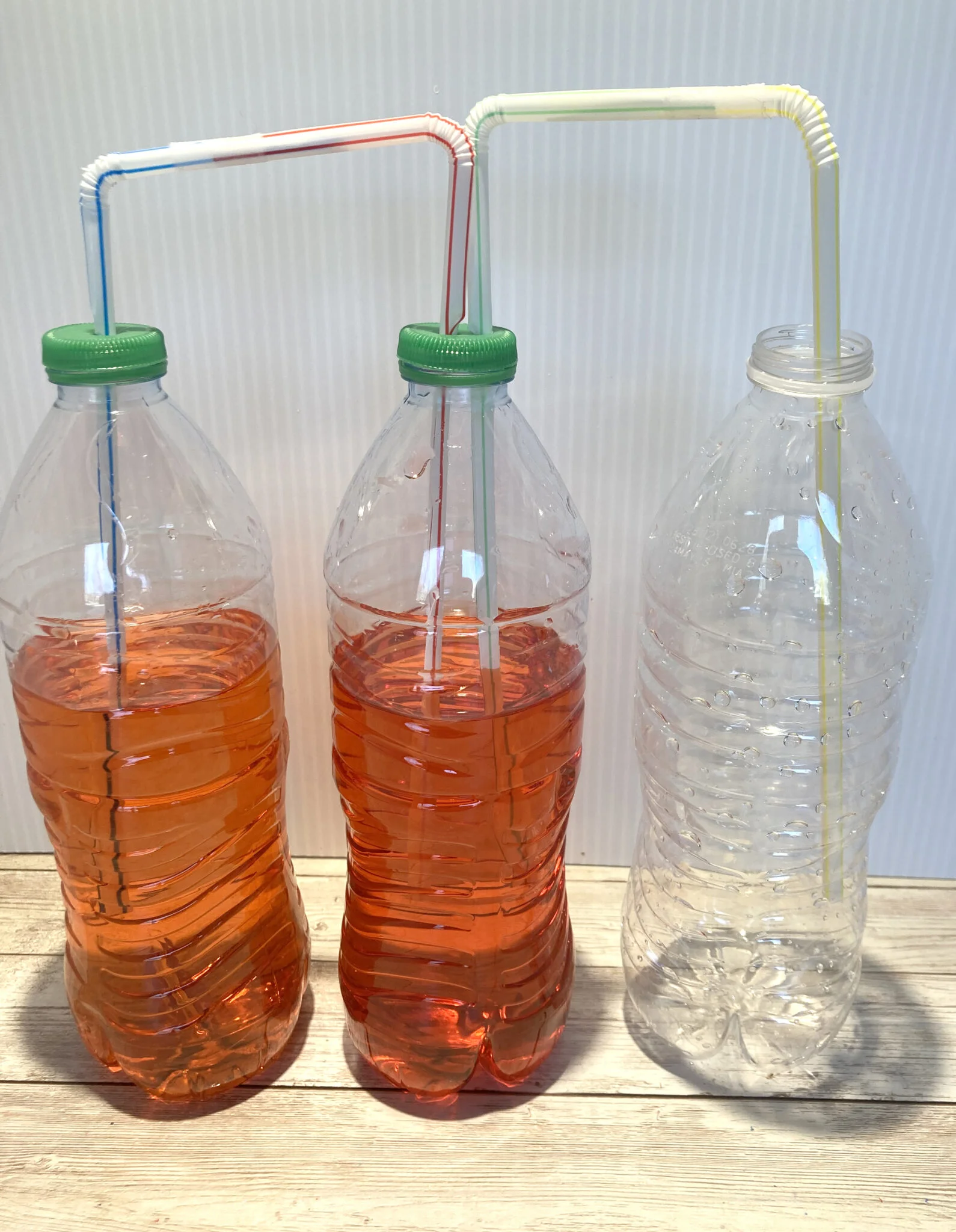
In this captivating middle school project, students will embark on a hands-on exploration of the human circulatory system and discover the marvels of the heart’s pumping mechanism.
Learn more: Heart Pump Model
13. Invisible Ink
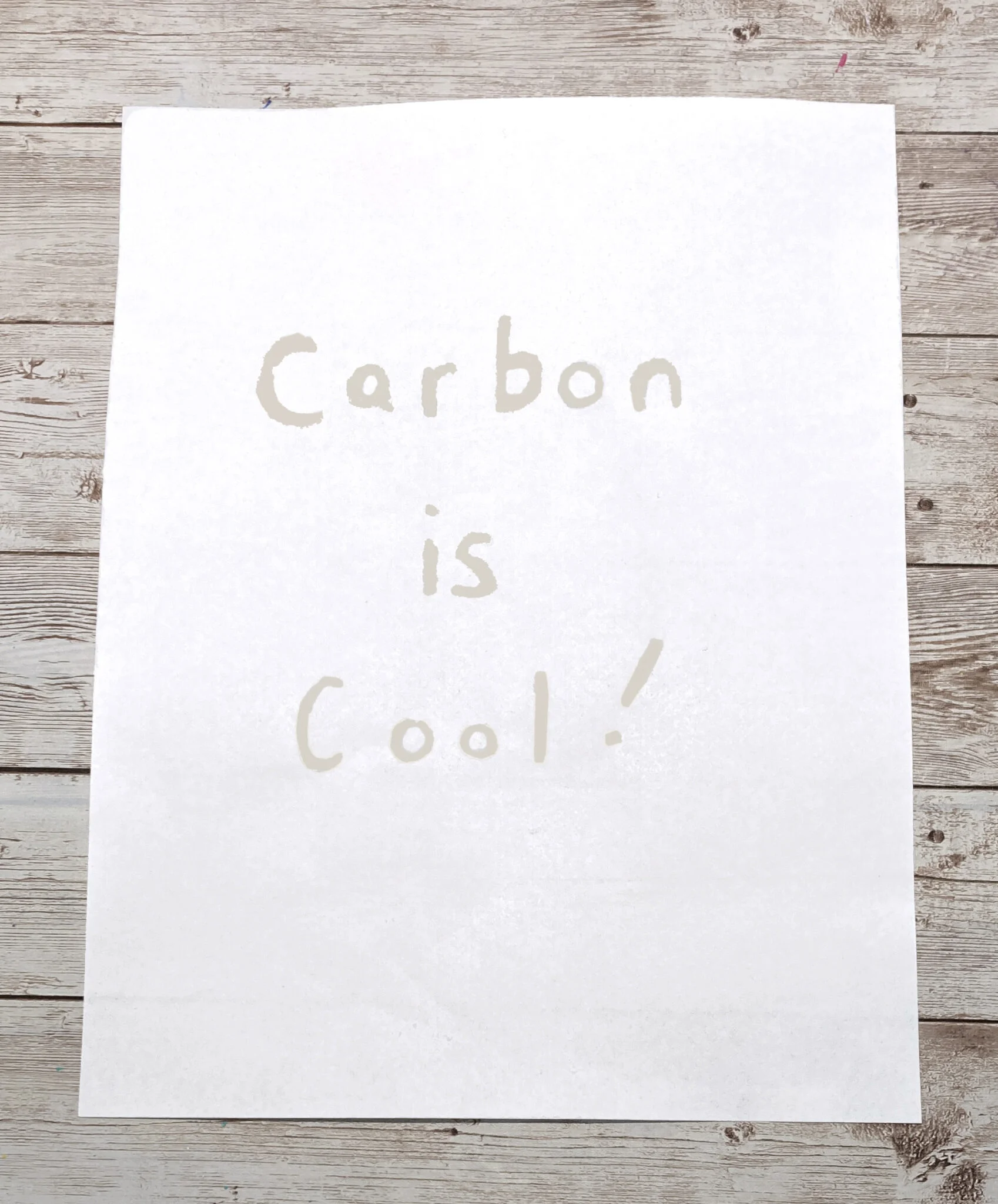
By concocting their own invisible ink, students will discover the science behind chemical reactions and learn how certain substances react to reveal hidden text when exposed to heat, light, or other catalysts.
Learn more: Invisible Ink
14. DIY Grow Box
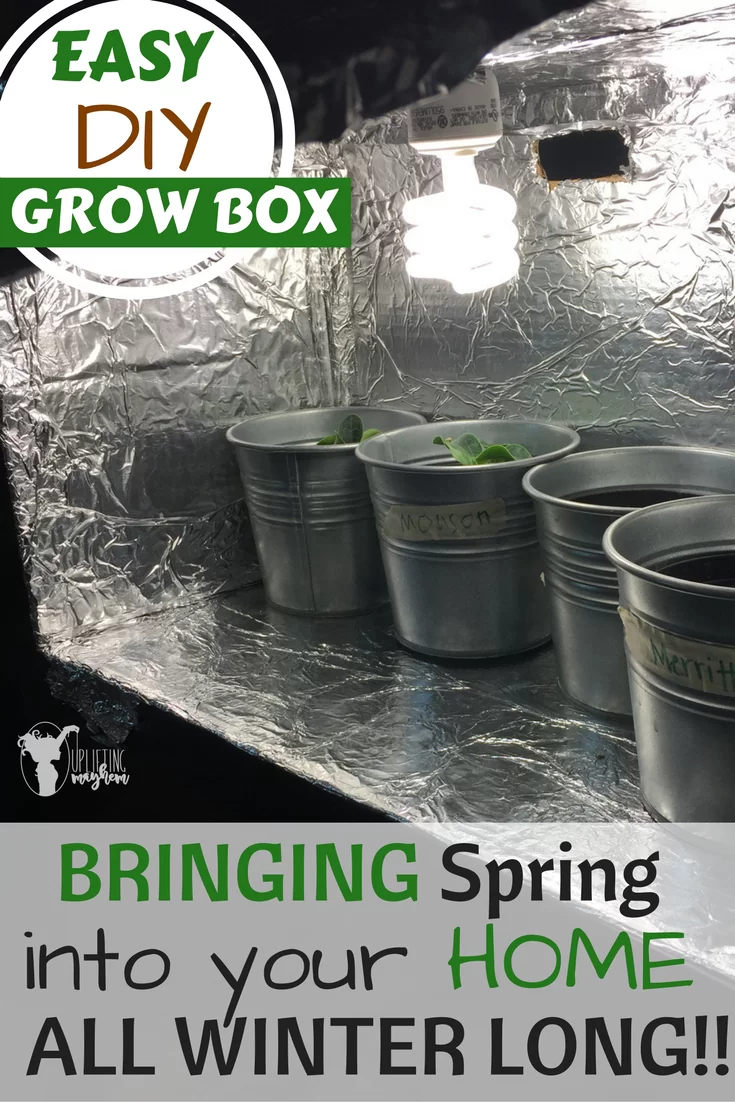
In this captivating middle school project, students will learn the wonders of plant growth and the art of nurturing a thriving garden.
By constructing their own affordable and innovative grow boxes using simple materials, they’ll have the perfect environment to observe the magical transformation from seeds to flourishing plants.
Learn more: Easy DIY Grow Box
15. Creative Ferris Wheel
By encouraging creativity and experimentation, this engaging experiment not only promises an exciting learning experience but also fosters teamwork and critical thinking
16. Alka Seltzer Rockets
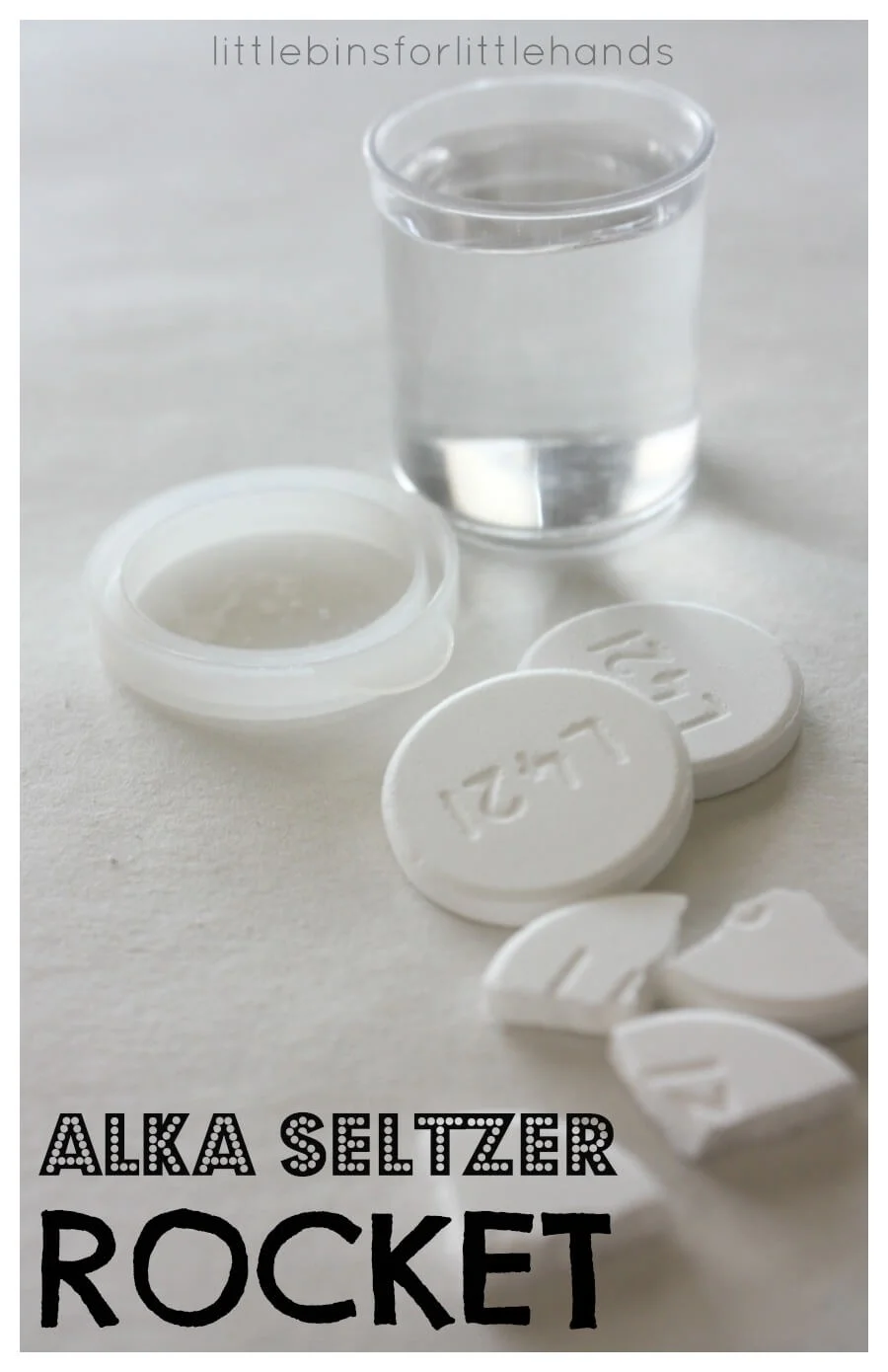
Prepare for a high-flying adventure with the Alka Seltzer Rockets science experiment! This exciting and explosive activity is a perfect choice for middle school students eager to explore the wonders of chemical reactions and rocketry.
17. Why do Apples Turn Brown?
Through hands-on exploration, middle school students will discover the role of enzymes and oxygen in this intriguing transformation.
18. Water Bending Experiment
By understanding the principles of surface tension and cohesion, you’ll be able to create mesmerizing effects, seemingly bending water with just a piece of static material.
19. Water Clock
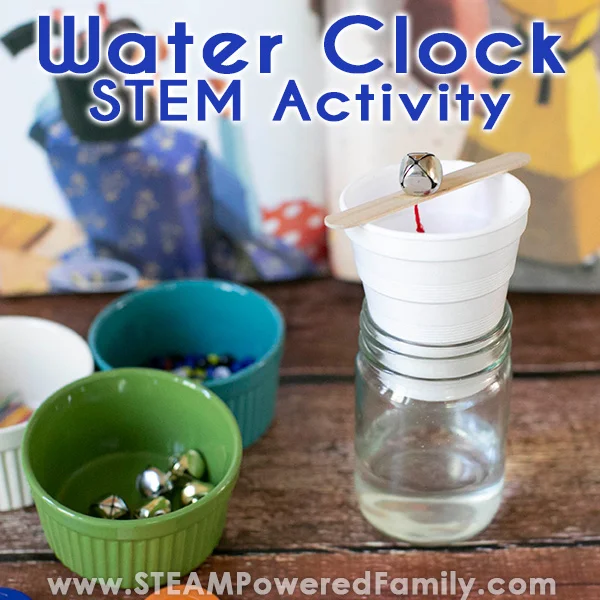
Experience the magic of timekeeping in its most ancient form with the fascinating Water Clock project! In this hands-on experiment, students will learn about history, physics, and engineering as they build their own timekeeping device using just water and a few simple materials.
Learn more: Steam Powered Family
20. Paper Ball Run Challenge
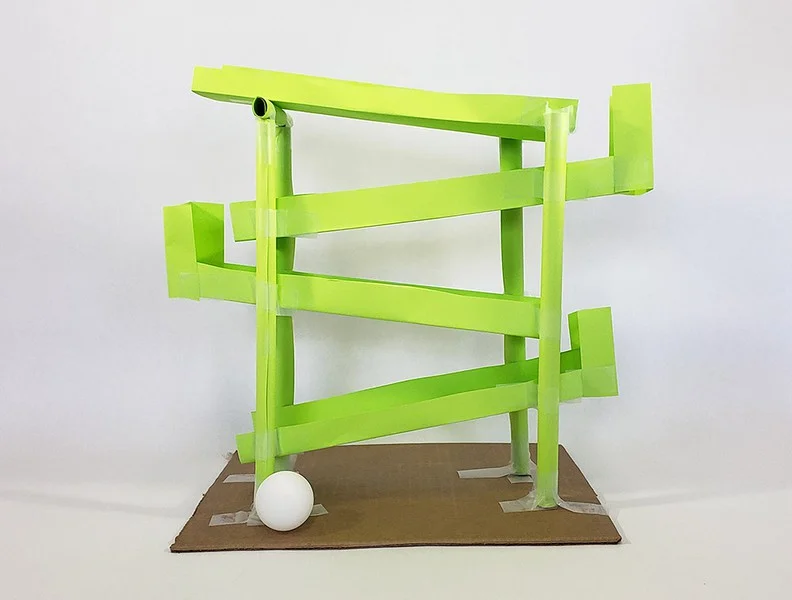
Get ready for a thrilling and creative adventure with the Paper Ball Run Challenge! In this captivating science experiment, you’ll explore the principles of motion, gravity, and engineering as you design and build your very own paper ball run.
21. Flood Barriers
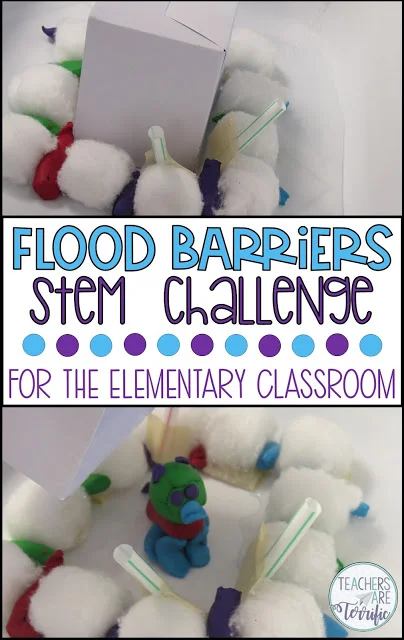
As you construct and evaluate your barriers, you’ll gain a deeper understanding of how floods occur and the importance of finding effective solutions.
Learn more: Teachers are terrific
22. Exploring the Law of Inertia Experiment Using a Fidget Spinner
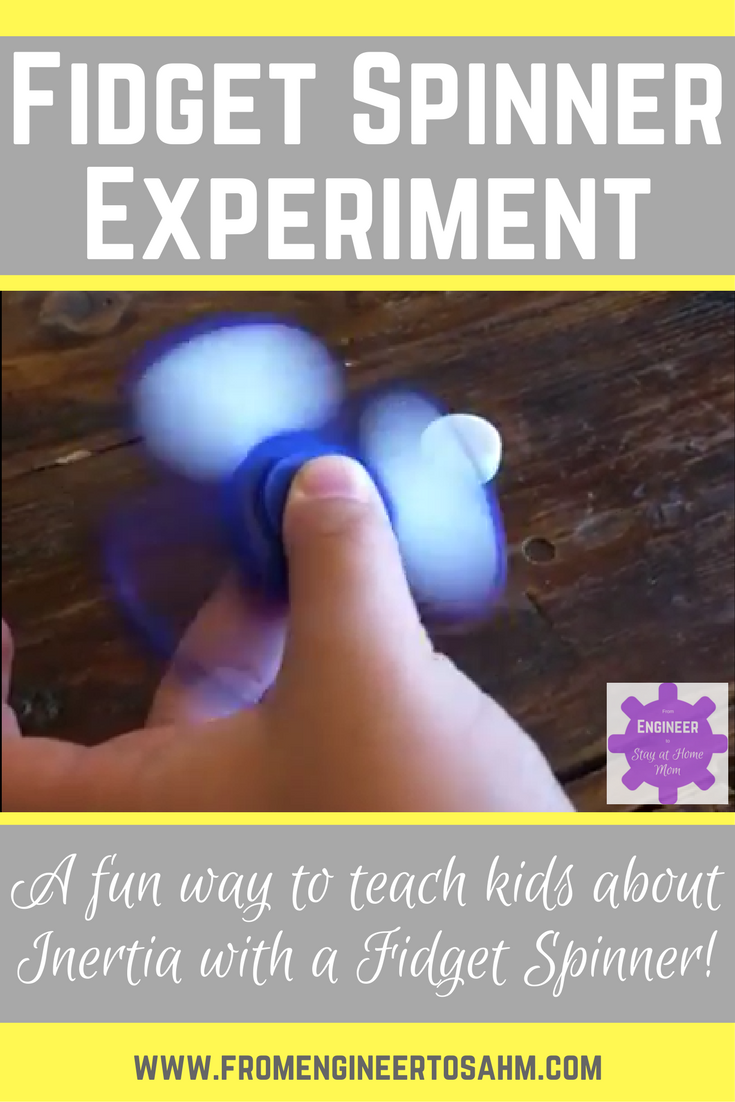
This engaging experiment will help you unravel Sir Isaac Newton’s Law of Inertia in a fun and hands-on way. By using a fidget spinner, you’ll explore how the spinning motion persists due to inertia and how different factors can influence its behavior.
23. Air Pressure Impact on Ping Pong Balls
By investigating the effects of air pressure on these lightweight spheres, you’ll uncover the secrets of flight, aerodynamics, and atmospheric pressure.
24. Rolling Uphill
In this experiment, you’ll witness the baffling phenomenon of a ball seemingly defying gravity by rolling uphill on a specially designed track.
25. Pick Up Ice with a String
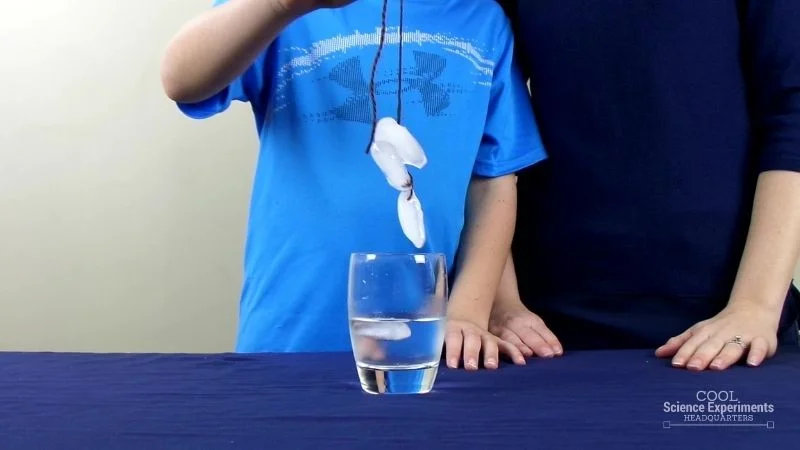
Have you ever wondered if it’s possible to lift ice using just a simple string? In this fascinating experiment, you’ll explore the principles of heat transfer and surface tension as you attempt to defy gravity and lift ice cubes with nothing but a string.
Learn more: Pick Up Ice with a String
26. Keep a Paper Towel Dry Under Water
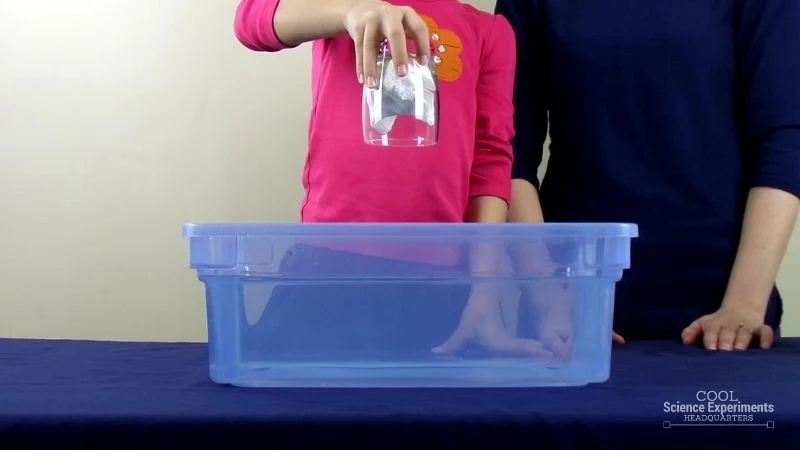
This captivating experiment will unveil the wonders of surface tension and hydrophobicity, as you attempt to create a barrier that defies the conventional wisdom of water soaking through paper.
Learn more: Keep a Paper Towel Dry Under Water
27. Upside Down Glass of Water
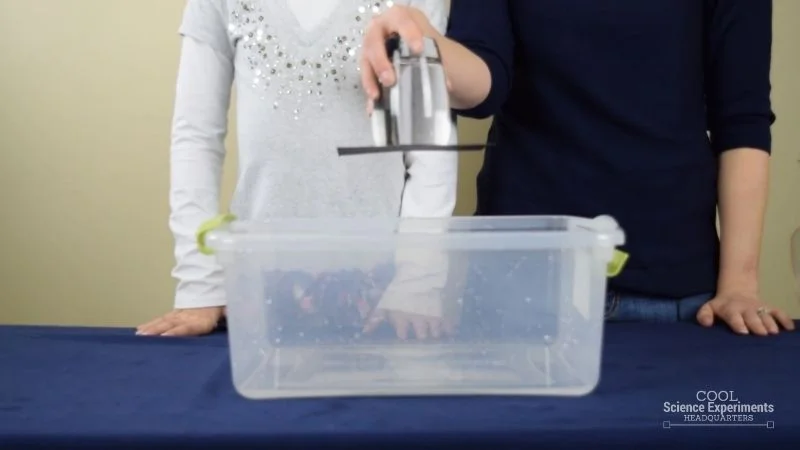
This mesmerizing experiment will unravel the fascinating concept of air pressure and its influence on liquids. As you turn a glass of water upside down and observe the water’s defiance of falling out, you’ll gain insight into the powerful role of air pressure in our everyday lives.
Learn more: Upside Down Glass of Water
28. Make a Wine Glass Sing
Have you ever wondered how to turn a simple glass of wine into a musical instrument? This captivating experiment will introduce you to the fascinating concept of acoustics and how sound waves interact with liquid-filled glasses.
29. Crush a Plastic Bottle
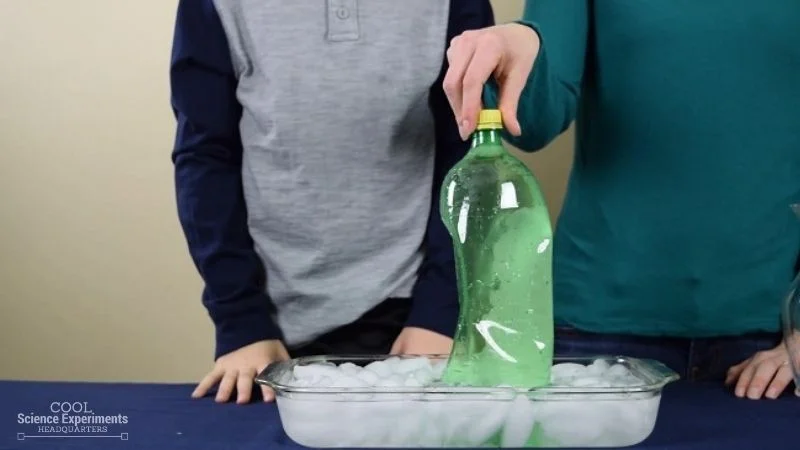
Are you curious about the forces at play when we compress a seemingly indestructible plastic bottle? This captivating experiment will unravel the science behind how pressure and air interact to create this astonishing effect.
Learn more: Crush a Plastic Bottle
30. Ruler Changes Size
Get ready to witness an optical illusion that will challenge your perception of reality. In this captivating experiment, you’ll explore the fascinating phenomenon of light refraction and how it can make objects appear different than they really are.
31. Egg in a Bottle
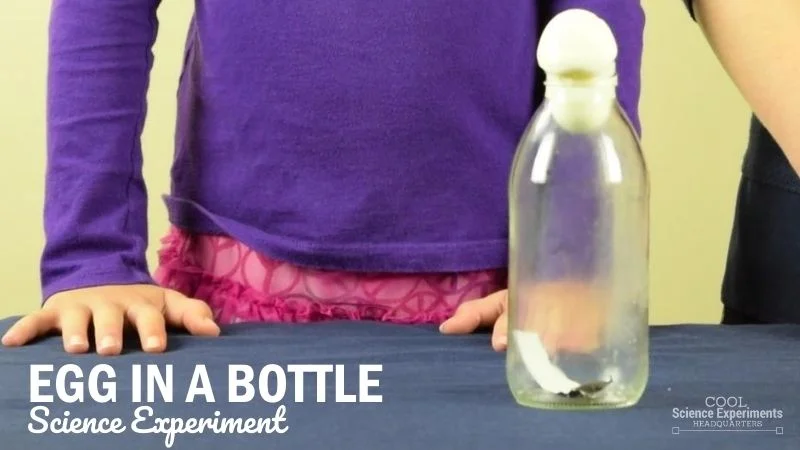
Have you ever wondered how to get an egg into a bottle without breaking it? This mesmerizing experiment will introduce you to the concept of air pressure and how it can be harnessed to achieve the impossible.
Learn more: Egg in a Bottle
32. Water Doesn’t Leak Out Science Experiment
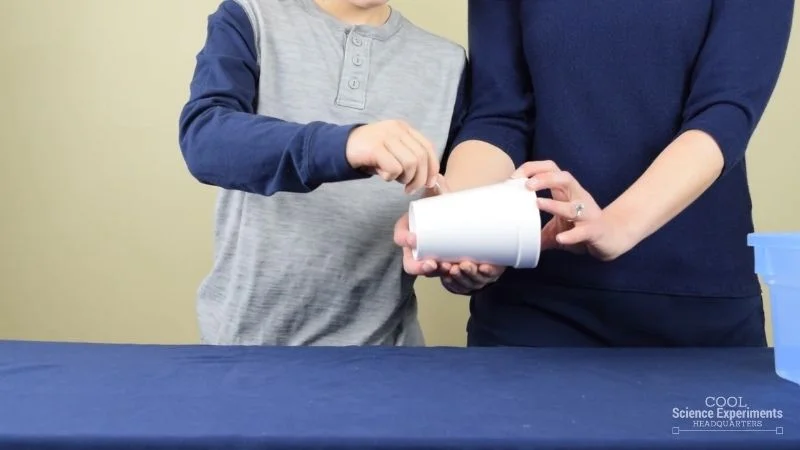
This hands-on activity not only sparks curiosity and amazement but also teaches you about the properties of gases and the laws of physics.
So, get ready to be astounded and dive into the magic of science with the “Water Doesn’t Leak Out” experiment – an entertaining and enlightening adventure that will leave you thirsting for more knowledge!
Learn more: Water Science Experiment
33. Pick Up a Ball with a Jar
This captivating experiment will introduce you to the fascinating concept of air pressure and how it can create a powerful force that defies gravity.
34. Glowing Water Science
This captivating experiment will introduce you to the fascinating properties of fluorescent materials and how they interact with light.
35. Fizzy Cloud Dough
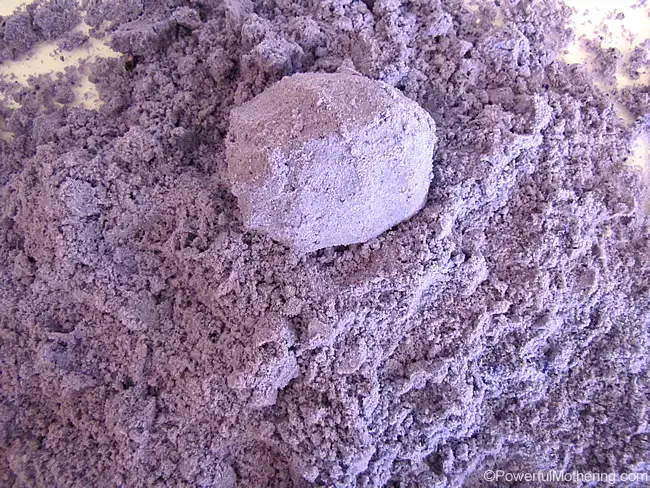
The fizzing reaction not only adds an element of excitement but also provides a great opportunity to explore the science of chemical reactions and the release of carbon dioxide.
Learn more: Fizzy Cloud Dough
36. Underwater Magic Sand
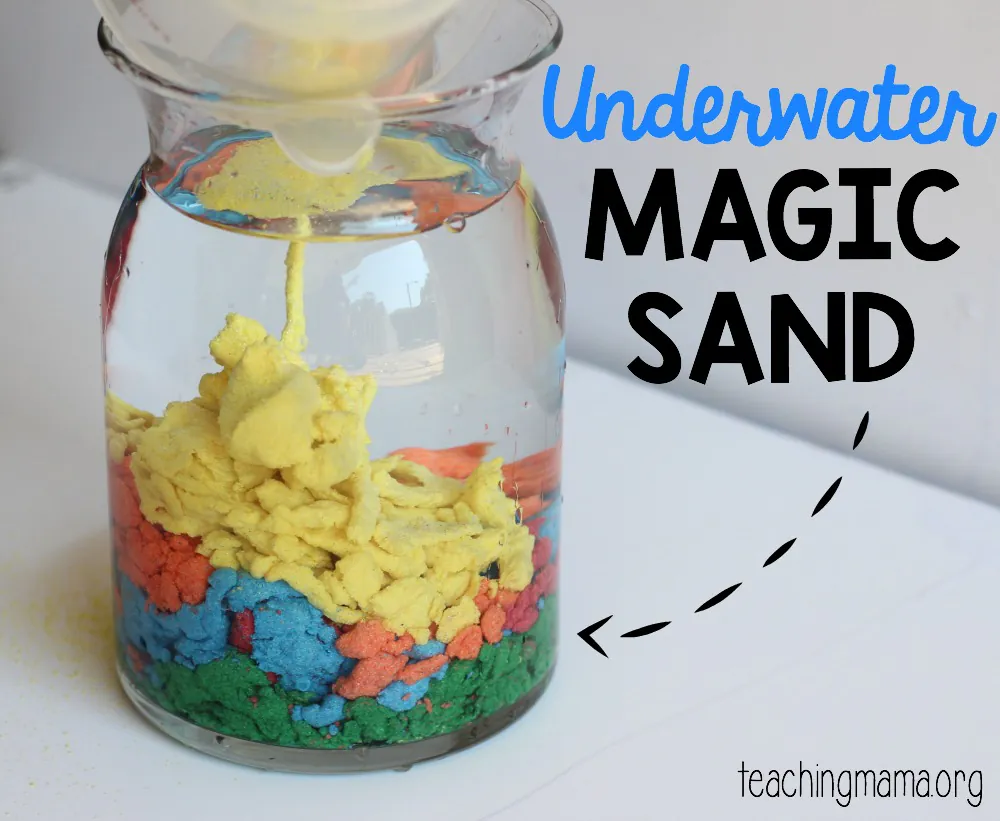
Get ready to witness the marvels of hydrophobic science and explore the secrets of this captivating underwater magic sand experiment.
Learn more: Teaching Mama Org
37. Make Bouncy Polymer Balls
This captivating experiment will take you on an exciting journey into the realm of polymers and chemical reactions.
38. Use a Crayon as a Candle
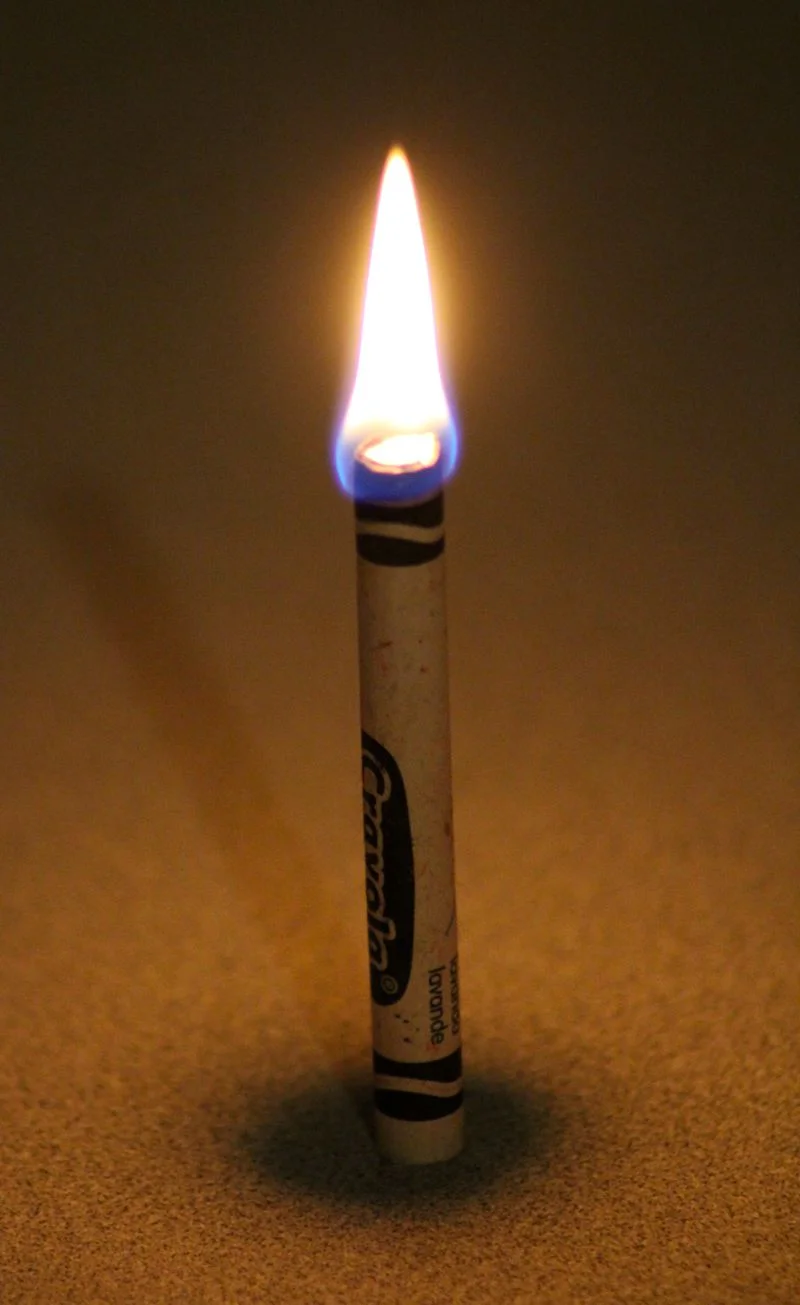
This hands-on activity not only sparks curiosity and excitement but also offers a safe and educational way to explore the science of combustion and the flammability of materials.
Learn more: Crayon Candle
39. Flame Test Colors

Not only does it spark curiosity and wonder but also deepens your understanding of the emission spectra of elements.
So, get ready to illuminate your scientific knowledge with the “Flame Test Colors” experiment – an educational and visually stunning adventure that will leave you dazzled and eager to discover more about the fascinating world of chemistry!
Learn more: Thought Co
40. Grow A Bean Plant
By planting a simple bean seed and providing it with water, sunlight, and care, you’ll witness the fascinating process of germination and watch as your bean seedling sprouts and grows.
Similar Posts:
- 68 Best Chemistry Experiments: Learn About Chemical Reactions
- 37 Water Science Experiments: Fun & Easy
- Top 50 Fun Food Science Experiments
Science Lesson Plans for Middle School
Here you'll find a curated collection of science lesson plans for 6th, 7th, and 8th grade. Many of our activities list connections to the Next Generation Science Standards.
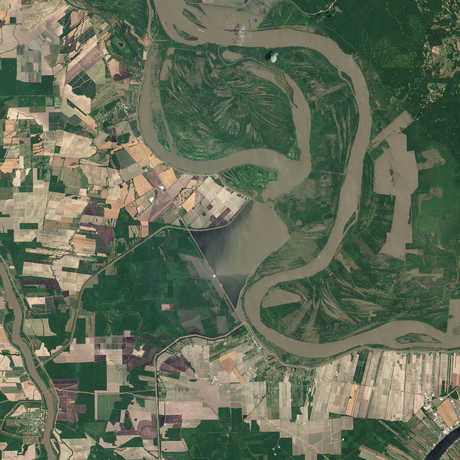
"Morganza Spillway" © 2011 NASA Earth Observatory
Can we use a model to predict the impacts of nutrient pollutants on an aquatic ecosystem?
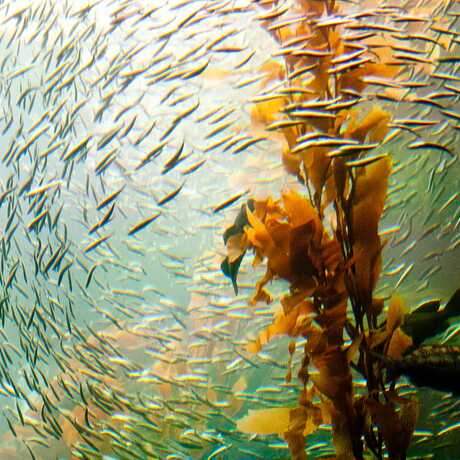
"Giant Kelp Forest" © 2010 Tom Thai
Could you describe the kelp forest food web as a system?
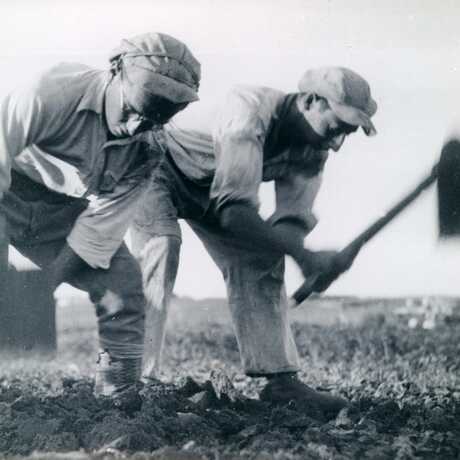
Trace patterns of agricultural expansion through space and time. Do you see evidence for how agriculture spread?
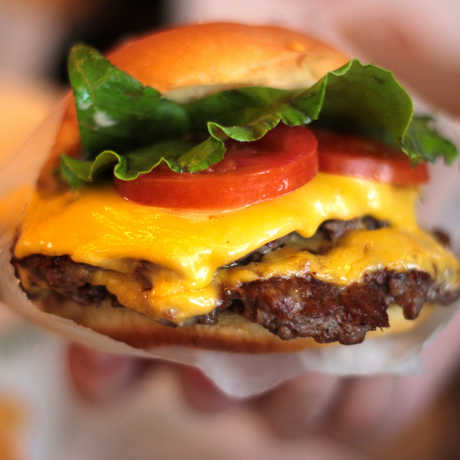
© Pamela Graham
How much freshwater was used to produce your meal today?
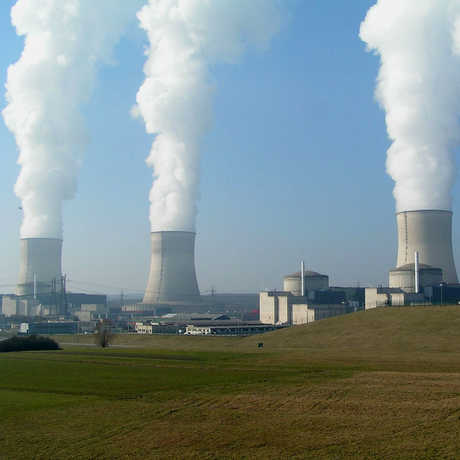
"Nuclear Power Plant Cattenom" © 2005 Stefan Kühn
What are the problems associated with burning fossil fuels?
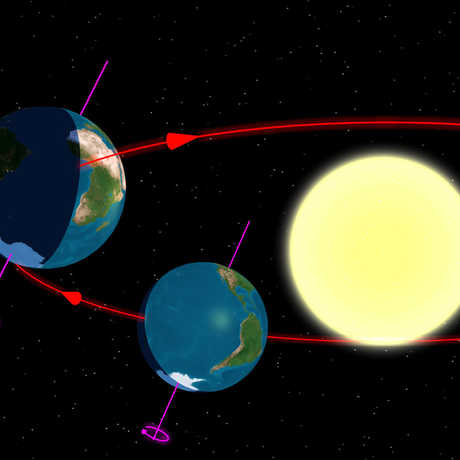
"Diagram of the Earth's seasons as seen from the south" © 2006 Tauʻolunga
The Earth's tilt is the reason for the season!

"Star" © 2014 Tom Hall
You may know your zodiac sign, but do you know your birthday stars?

"Blue Marble" © 2002 NASA Earth Observatory
Students will practice being Earth to learn about how our orbit affects what we see.
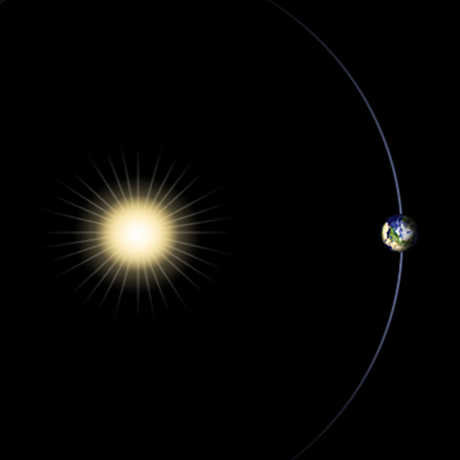
"Earth's Orbit" © 2015 NASA/JPL-CalTech
This interactive lesson will demonstrate the difference between "rotation" and "orbit."
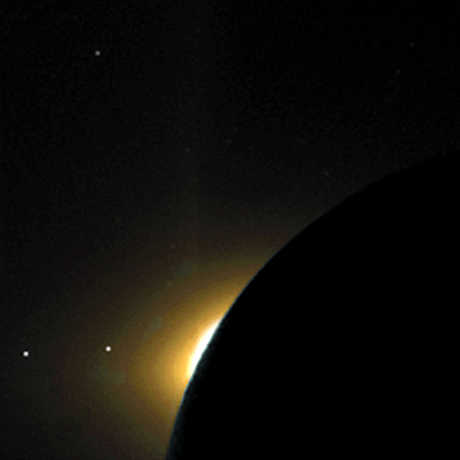
"The Plane of the Ecliptic" © 2017 NASA
This interactive activity will demonstrate why some planets look like they are traveling backwards.
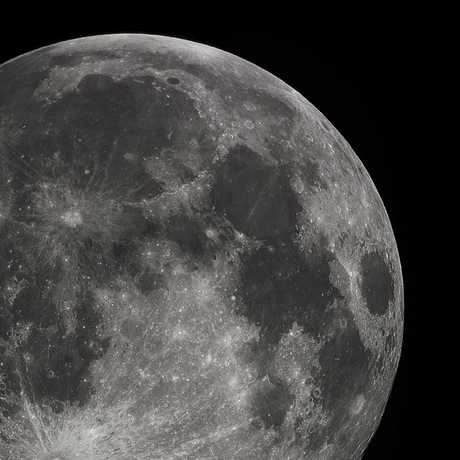
"Full Moon 2010" © Gregory H. Revera
Learn about the phases of the moon with this tactile activity!
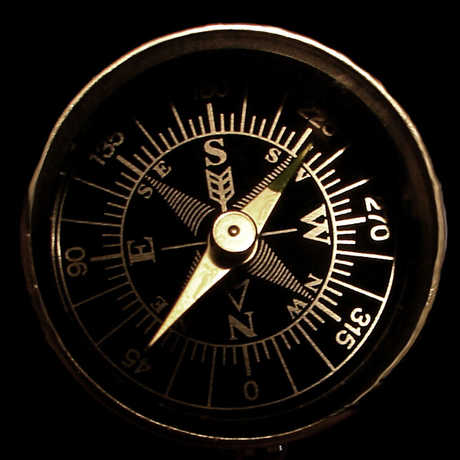
© Montesdioca
Track the sun's position to learn the cardinal directions.
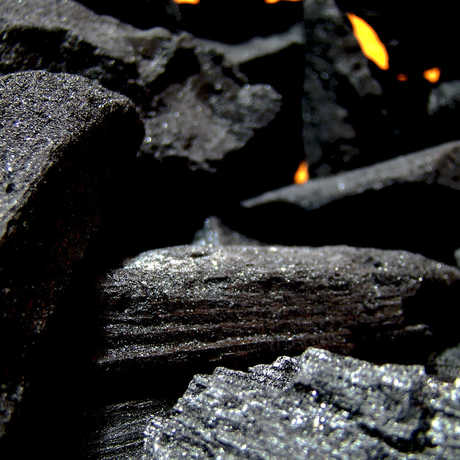
© Christian Hold
What kinds of everyday objects contain carbon? This introductory activity will help you get it straight!

© Kaz Canning
How does the finite amount of carbon on this planet move around in the environment, from one place to another?

Can you create a model of how carbon flows between the biosphere, hydrosphere, atmosphere, and lithosphere?
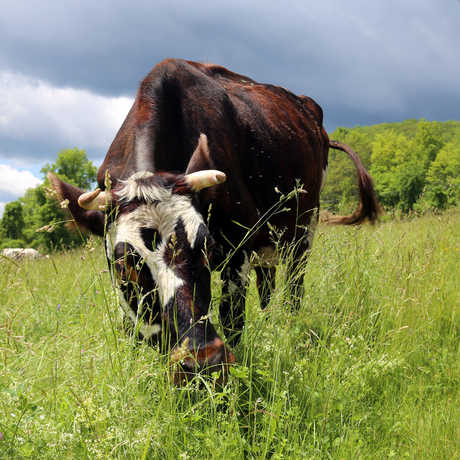
Learn what it takes to develop, grow and consume some of the foods and water we need.
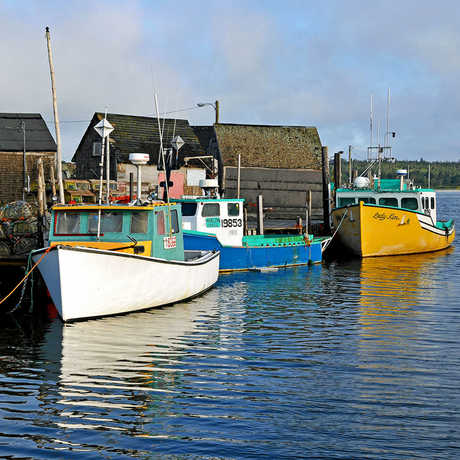
"Boats" © 2016 Dennis Jarvis
Using a model, students will construct explanations for one of the reasons why fish populations are declining.
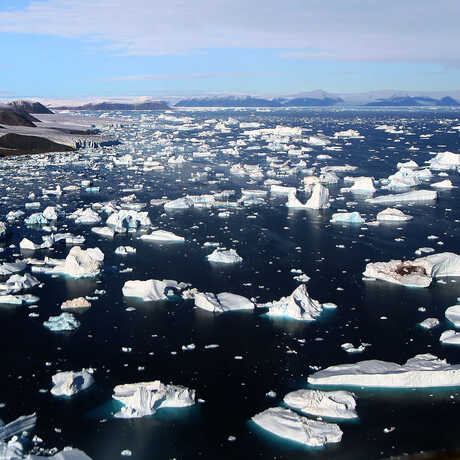
© Brocken Inaglory
A complimentary extension to the lesson Global Climate Change and Sea Level Rise.
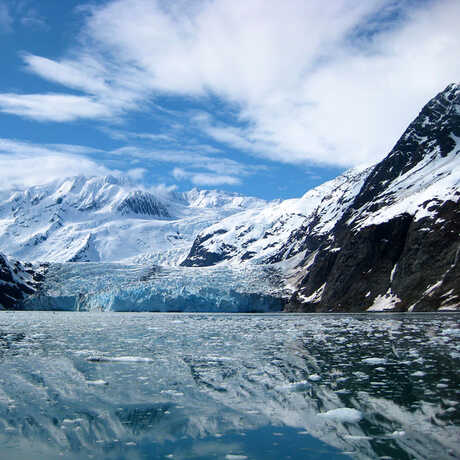
"Surprise Glacier" © 2010 Jiuguang Wang
Which type of ice causes a rise in sea level when it melts: glaciers, icebergs, or both?
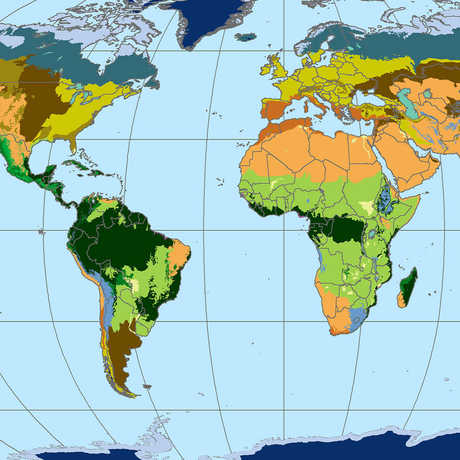
"Global Biomes" © 2012 NASA Socioeconomic Data and Applications Center
Where are our rainforests? Why are they there?
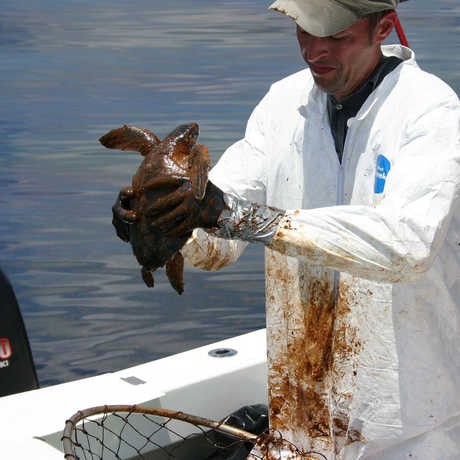
"Oiled Kemps Ridley Sea Turtle" © 2013 NOAA
In this inquiry-based activity, students test different materials to see which is best to clean up an oil spill.
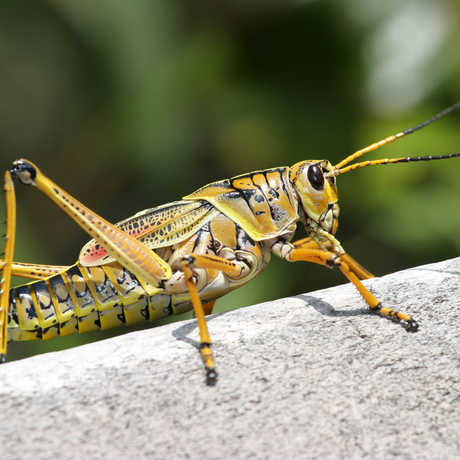
"Grasshopper" by Ryan Wood
Learn about adaptation by creating an insect that can survive in a specific habitat!
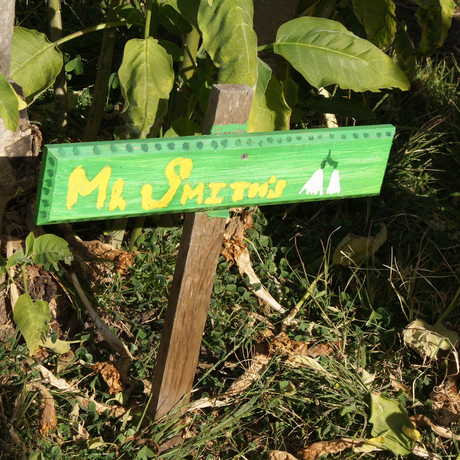
© Berkeley Unified School District
Featuring over 40 activities, this guide will get your students outside throughout the year!
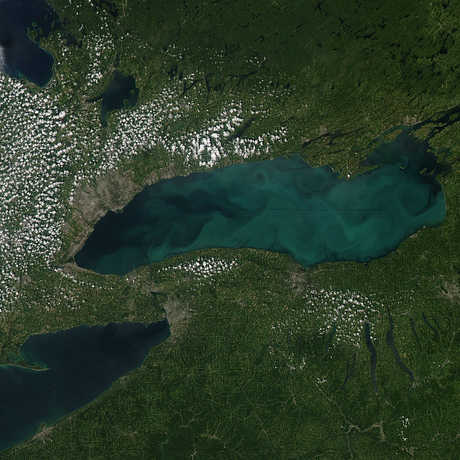
©NASA/GSFC/Jeff Schmaltz/MODIS Land Rapid Response Team
Observations inspire scientific questions and drive discoveries. Explore seasonal primary productivity on Earth!
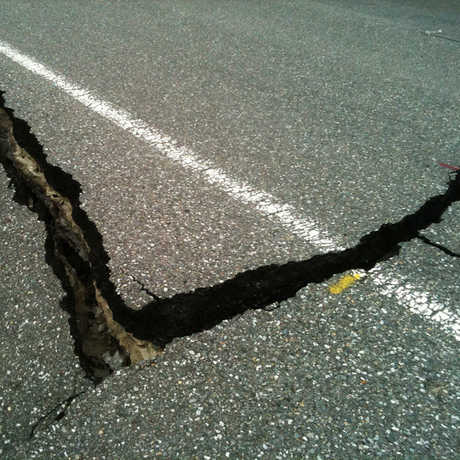
© 2011 SmartFat
By building your own seismograph to document shaking, you'll learn how scientists measure earthquake intensity.
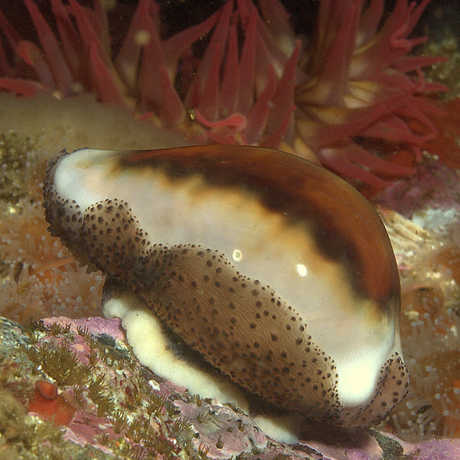
© Ed Bierman
Through scientific sketching, you can identify patterns in traits shared by a species and get to know variation.
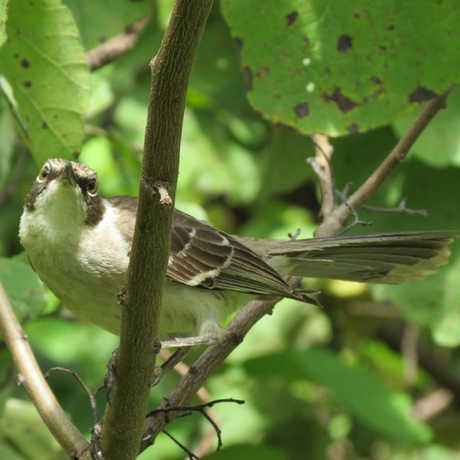
© Jim Moulton
These mockingbirds have an interesting history: can you construct their evolutionary relationship using logic?
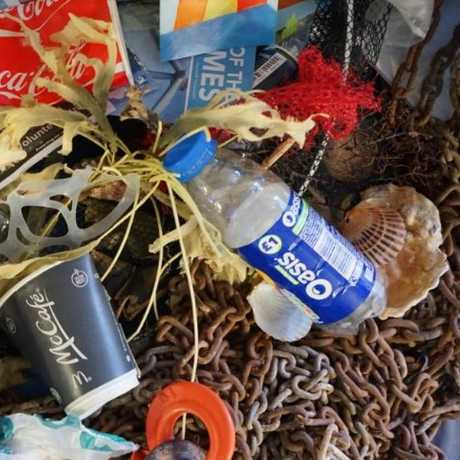
By conducting a survey of an outdoor environment, students will design solutions for preventing marine debris.
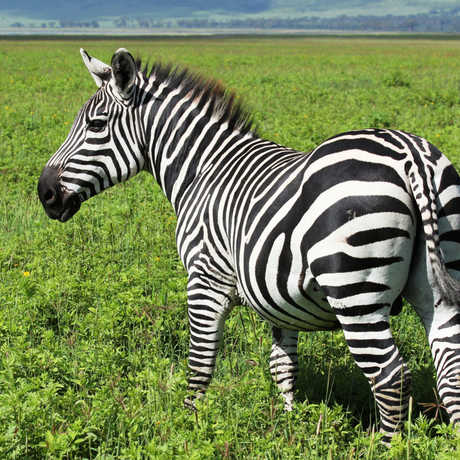
© Filip Lachowski
How does the digestive system of a zebra differ from that of a buffalo?
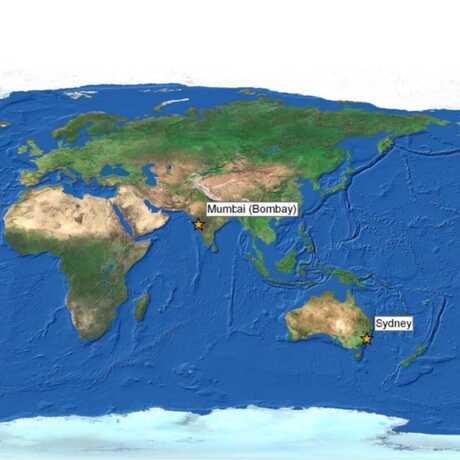
© 2009 California Academy of Sciences
Students will explore tectonic plate boundaries and different types of seismic waves generated by earthquakes.
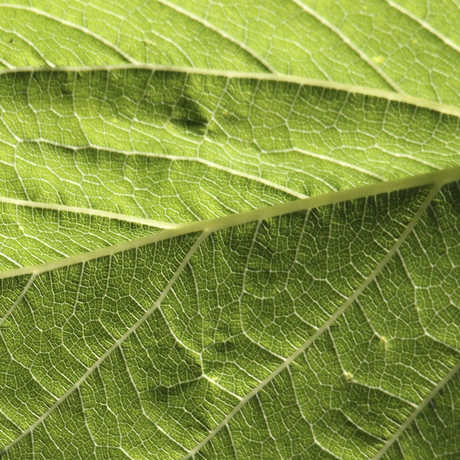
"Backlit Leaf" © 2011 Threthny
Discover the part of the leaf that allows for gas exchange!
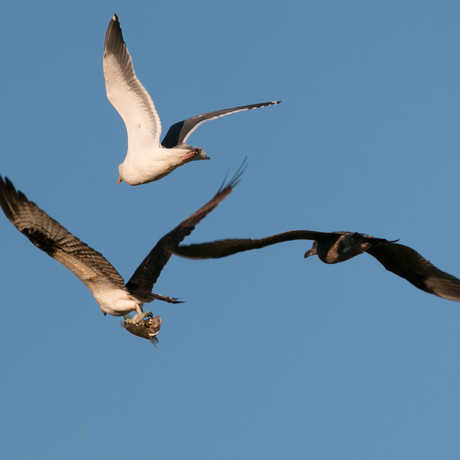
"Osprey with Gulls" © 2014 Lee Jaffe
Why do birds migrate? Visualize and explore the connectedness of organisms within and across ecosystems.

© Claudia Daggett
In this activity, students will be transformed into strategically low-impact world travelers.
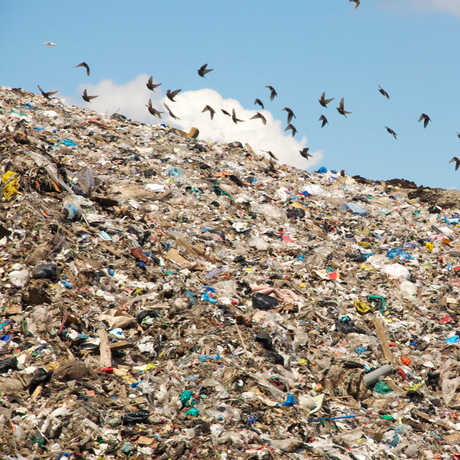
"Behold thy Landfill" © 2010 Justin Ritchie
By sorting our waste into different bins, we can make a huge impact.
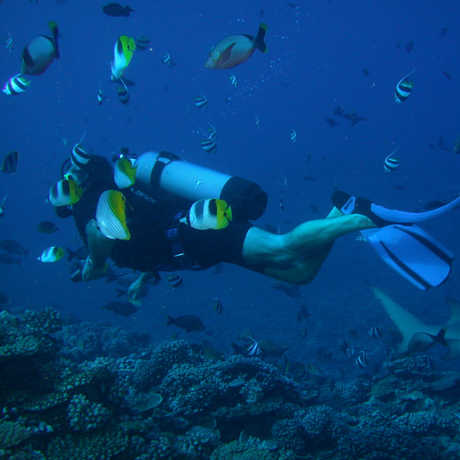
"Diver and Lemonshark" © 2004 Hpm~commonswiki
Learn about buoyancy by creating a creating a neutrally buoyant "scuba diver."
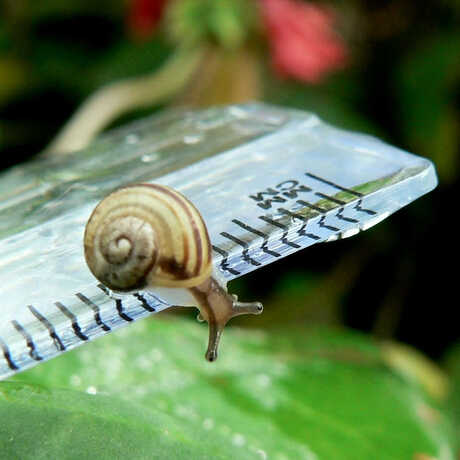
"He's too tiny to measure up." © 2006 Patty O'Hearn Kickham
Practice ratios and create scale models to compare sizes between the largest animals.
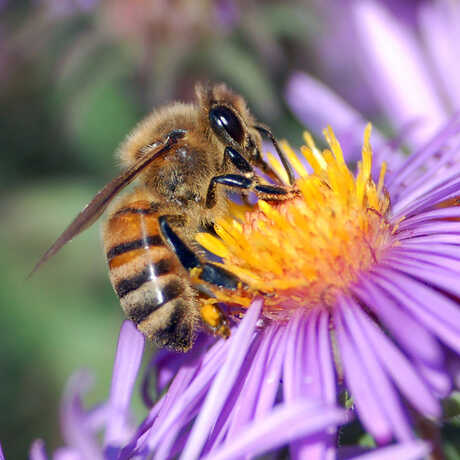
"European honey bee extracts nectar" by John Severns
Investigate why flowers have different shapes and colors.
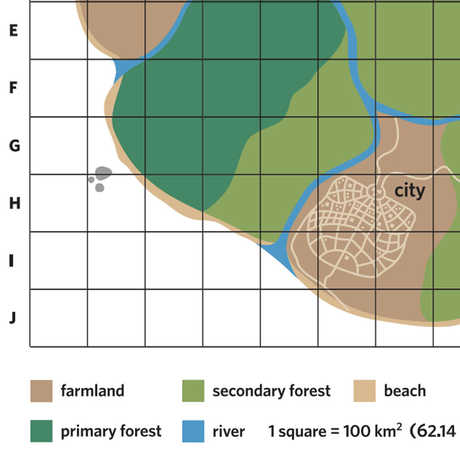
Students will learn about real-world issues involved in making conservation plans to save endangered species.
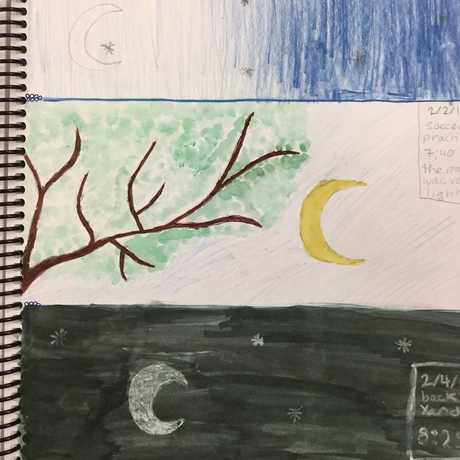
Erica Katz's fifth graders seek to answer the question: "Why does the moon look different on different days?"
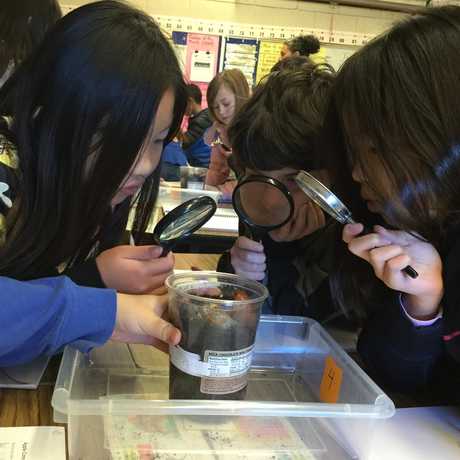
Anoushka Takla's fourth graders seek to answer the question: "What happens to our trash over time?"
In this activity, students gain insight into the challenges associated with meeting various design requirements.
© 2015 California Academy of Sciences
In this two-day lesson, students explore several issues surrounding our current global food system.
Practice rapid ideation—an important step in design thinking—by brainstorming solutions to food systems issues.
In this activity, students will work together to weigh potential solutions to global food system issues.
Design Thinking Challenge: Are your students ready to tackle a food system issue at home or in their school?
Students contextualize a design problem by examining the water consumption of smartphones, boots, and chocolate.
In this two-day lesson, students explore several issues surrounding global water use and conservation.

Practice rapid ideation—an important step in design thinking—by brainstorming solutions to global water issues.
In this activity, students will work together to weigh potential solutions to water use and conservation issues.
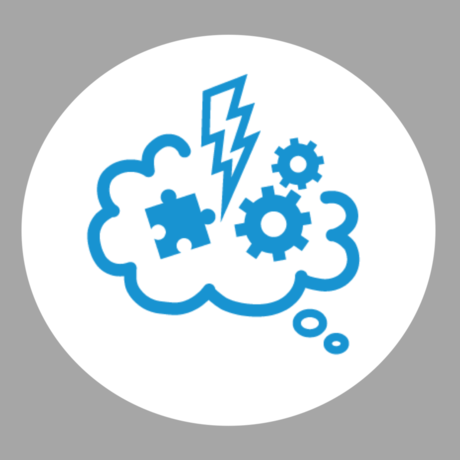
Design Thinking Challenge: Are your students ready to tackle a water issue at home or in their school?
Looking for ideas to spice up your science teaching? Our activity database features full-period lessons to integrate into your normal curriculum.
Lessons by Grade Level
If you're seeing this message, it means we're having trouble loading external resources on our website.
If you're behind a web filter, please make sure that the domains *.kastatic.org and *.kasandbox.org are unblocked.
To log in and use all the features of Khan Academy, please enable JavaScript in your browser.
Middle school physics - NGSS
Welcome to middle school physics, unit 1: movement and forces, unit 2: forces at a distance, unit 3: energy, unit 4: waves, unit 5: hands-on physics activities.
More Labs... Less Fuss
Spend more classroom time doing science..
As science teachers can we can spend a lot of time talking about science...
and writing about science...
and reading about science...
without actually doing much science.
What if we could reverse that?
What if we could spend the majority of our time in the lab?
Then, when we talked about science,
it would be about everything we just did.
3 Steps to More Hands-On Science

Sign Up for a Free Lesson
With just an email... no spam, no gimmicks.

Step 2: Try a Course
Check out the many different topics , step 3: access the collection, join the membership to get instant access, recent posts.

Teaching the Water Cycle Kinesthetically

10 Simple Experiments for Density and Buoyancy and Air Pressure

Nature Walk Looking for Pinholes

12 Hands-On Science Activities for Middle Schoolers: Inspiring a Love for STEM
Finding hands-on science activities for middle schoolers can sometimes be a challenge. This grade level is at an awkward, in-between phase where some labs can be a bit too advanced, but they’re too “old” to enjoy the activities younger kids would find engaging.
But never fear! We’ve perused countless activities and experiments surrounding the most common STEM topics, and we’re here to share them with you. And we’ve made sure that each activity is both fun and STEM-focused – the perfect balance for middle school that will make your students fall in love with science!
Don’t miss the download at the end of this post. It’s a fun, hands-on project to teach your students all about fossils complete with a corresponding lab video!
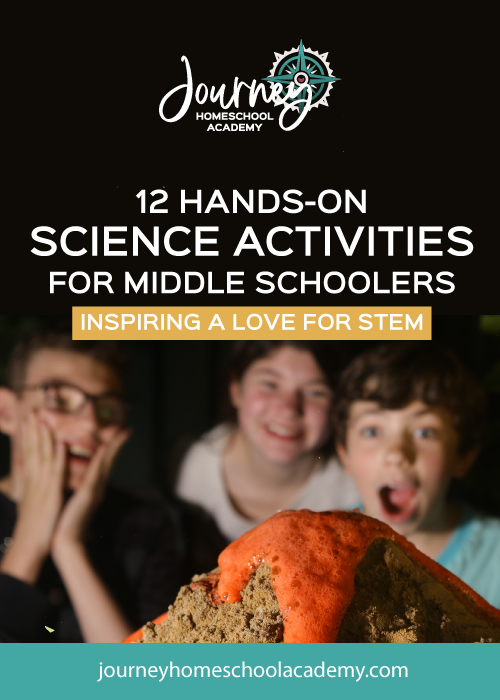
STEM: Science, Technology, Engineering, and Math. What brings them together, and why is it important for your middle school students to have a grasp of all four of these concepts?
First, each of these concepts utilizes the others in some way. You can’t successfully complete chemistry without a knowledge of math! Likewise, astronomy wouldn’t be as advanced as it is today without the world of engineering. Technology brings everything together to help us learn more than we ever thought possible. The world is huge and incredible, and there is still SO much to be discovered.
STEM learning also encourages creativity (a great opportunity to bring art class into the picture!). Middle school is a time full of development and growth, so why not expand the imagination and encourage that growth even further?
Finally, STEM encourages the application of learning concepts in real-life scenarios . STEM activities are more than just drawing a picture of an earthquake or a skyscraper. STEM takes it a step further and encourages your middle school students to think critically and actually make a model that resembles the real thing. And in doing so, they’ll inevitably use technology, engineering, math, and science! Bam!
12 Hands-On Science Activities for Middle Schoolers
Many of these activities can also be tailored for younger and older children as well. Get the whole family involved, and have fun!
DIY Solar Oven S’mores
As solar-powered technology becomes more popular, this activity will help your students to better understand how we can use the heat of the sun to create energy that cooks food . Note that this activity works best on a very hot and sunny day!
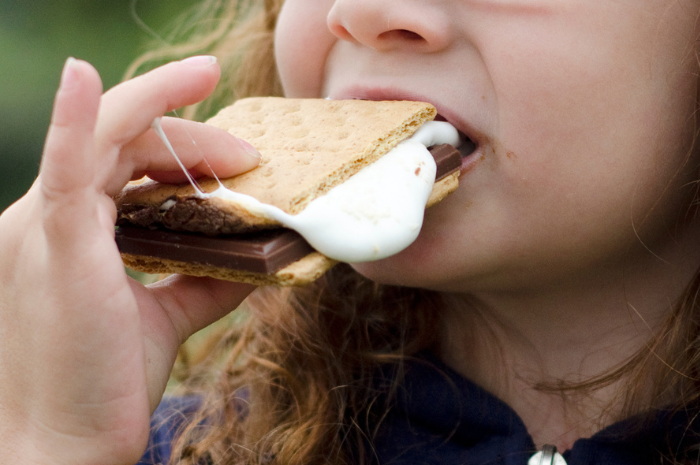
Bottle Rocket Challenge
If you tell your kids “We’re making bottle rockets today,” there’s a good chance they’ll start jumping up and down and then run to get all the supplies needed. Kids love explosions! This NASA-inspired astronomy activity creates an epic chemistry reaction. Just make sure that you’re supervising, because, well, explosions.
For more astronomy activities, check out 11 Amazing Astronomy Activities for Kids .
What Liquid Is Best for Growing Seeds?
When planting seeds, most of us just use tap water straight from the sink or hose. This biology activity , however, explores how various liquids impact the growth of seeds. It can also be done indoors if you live in an area where it’s currently cold.
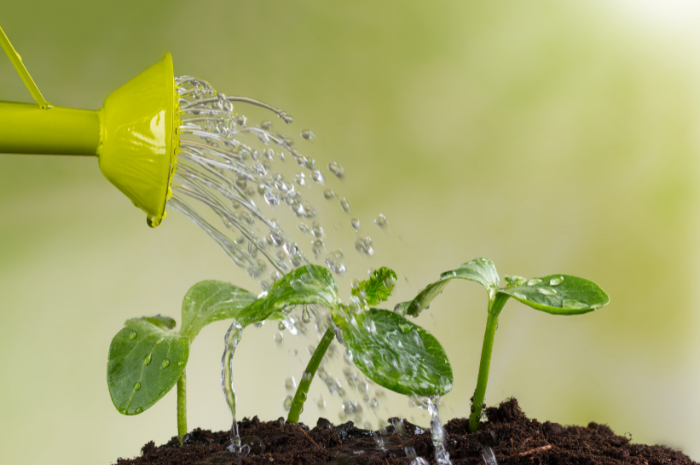

Edible Candy Bacteria
Normally, we like to stay far away from most bacteria, but this candy bacteria can be eaten, and it won’t make you sick! This STEM biology activity encourages your middle schoolers to explore various common bacteria in a way that is perfectly safe.
Edible DNA Model
Candy and science … is there truly anything better? The building blocks of life (DNA) are so complex, we can’t see them with the naked eye. This biology activity brings DNA to life through toothpicks, licorice, and gumdrops. Fun and so delicious!
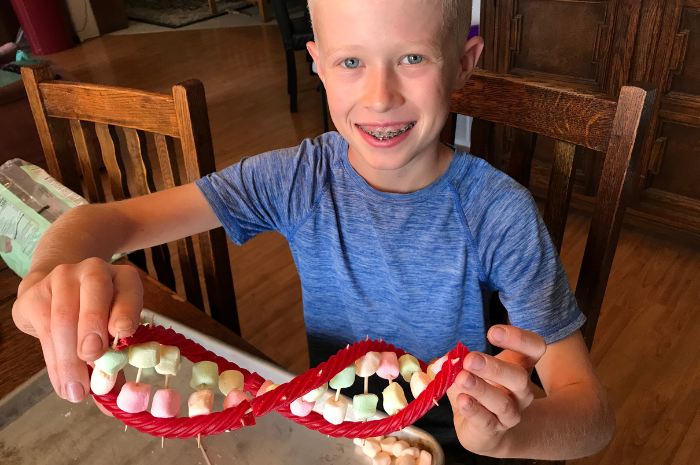
Earthquake Simulation
Earthquakes are a key concept when teaching earth science, but this activity also explores engineering. Build an earthquake model from toothpicks and marshmallows, and then use a pan of Jello to see just how sturdy your student’s structure is! This can also lead to an excellent discussion about modern-day buildings and how engineers and architects are developing structures to withstand powerful earthquakes.
DIY Bath Bomb
We know that we already said there’s nothing better than candy and science, but what about bath time and science? Students will have the opportunity to learn basic chemistry concepts to create a bath bomb that fizzes when added to water!
How to Make a Volcano
No matter what age, we can almost guarantee that every homeschooled student is going to jump at the opportunity to make a model volcano . Rocks, lava, explosions … heck yes! Using playdough (purchase some or make your own), create a volcano model with layers and colors that resemble the real thing!
The Dirty Water Project
This activity is great for the whole family or larger student groups like a co-op setting. We often take clean water for granted, but this hands-on science activity gives your student(s) the chance to make their own water filters and test out how to filter various pollutants. It will give them a glimpse into the importance of water treatment systems, which engineers and scientists work hard to perfect to keep our water clean and safe to drink.

Egg Drop Challenge
We generally discourage kids from dropping eggs on the ground, but this STEM activity encourages it! While middle school students probably aren’t taking a physics class just yet, they can still start to understand basic physics concepts. Plus, this activity also integrates a bit of engineering!
This website is a great place to start for students who are especially interested in video games. It combines all four STEM concepts to create an online software that lets your student create their own video game. We definitely recommend that you help/supervise your middle school student for this coding activity since it’s on a live website.
Make Your Own Fossils
While real fossils take years and years to form, this activity lets you make a model fossil in only 24 hours! Your student can first hunt for small natural items outside (sticks, shells, leaves, etc.) and then use modeling clay to better understand the process of fossil creation.
Want More Science Activities for Middle Schoolers?
At Journey Homeschool Academy, we have two amazing science courses for middle school! Earth Science Explored and Experience Astronomy dive into the wonders of our earth and the expanses beyond what our eyes can even see. In a critical middle school transition period, these courses encourage independence while still involving you as the teacher and parent.
Our videos, coursework, and many hands-on STEM activities will begin to prepare your middle schooler for the independence of high school. At the same time, it will foster the growth of their imaginations as they are learning about the world around them.
Inspiring a love for STEM-based learning can begin at any age, but middle school is a great place to get started!
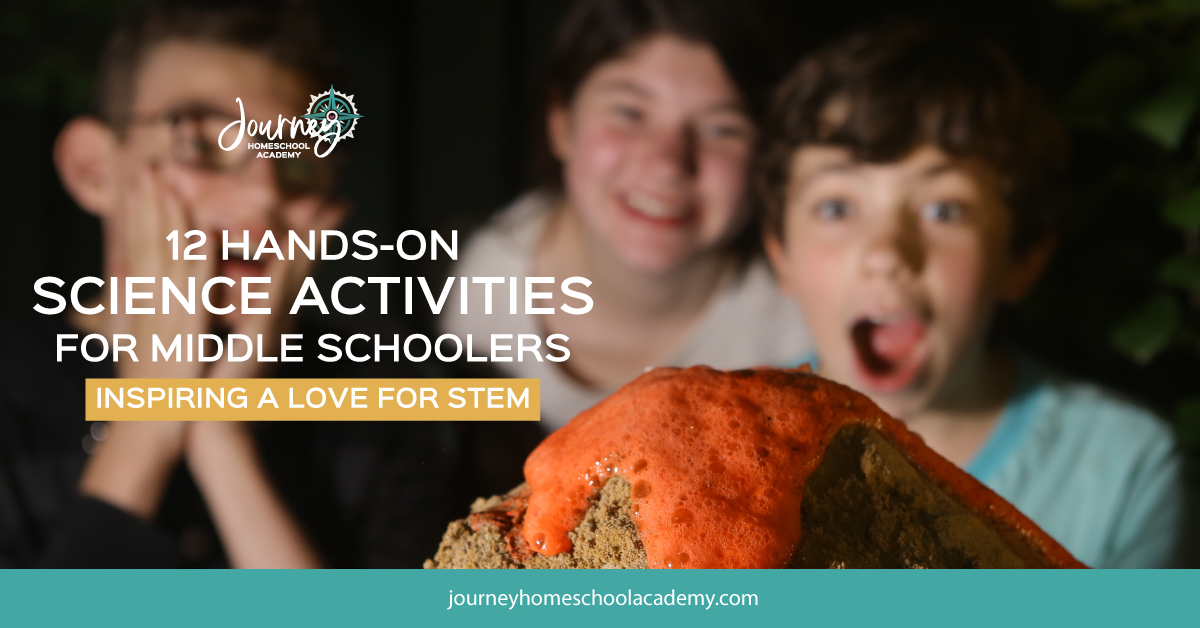
Get your kids excited about science with engaging, faith-based curriculum.
Take lesson planning off your plate! Journey Homeschool Academy’s multi-sensory approach makes science interesting with flexible, engaging lessons without sacrificing a rigorous academic education.
Pin It on Pinterest
Fun and Engaging Science Activities for Middle School
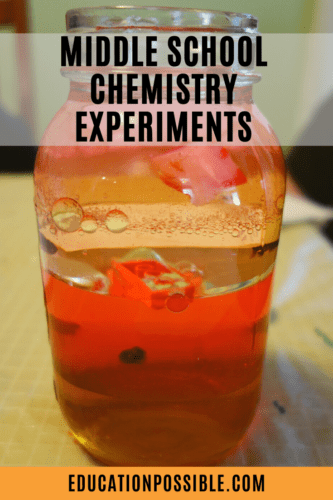
When you hear the term science activities for middle school , does it make you groan or cheer?
In our homeschool, science has always been one of our favorite subjects. And why shouldn’t it be?
It’s full of cool hands-on experiments that give kids the chance to explore their world. It’s one of the few subjects that regularly brings concepts to life in very real, tangible ways for students.
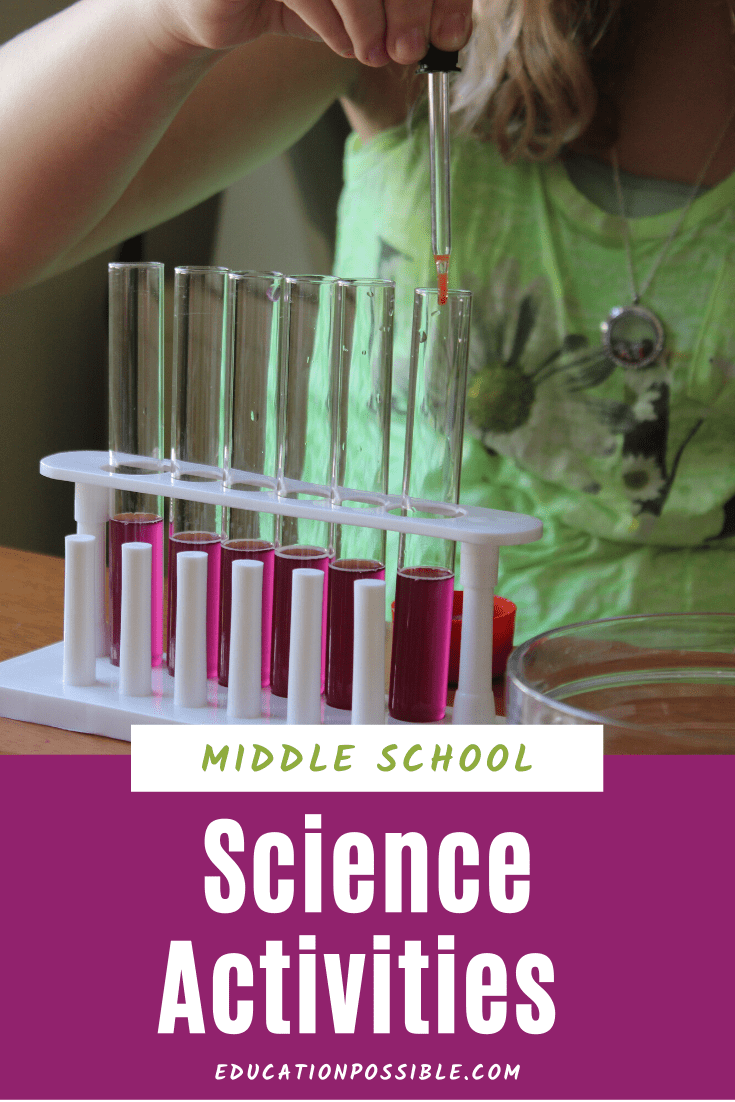
This subject is incredibly fun to teach at home. Add some of these interesting activities to your tween’s lesson plans, and you’ll see that science can be awesome.
This post contains affiliate links .
Table of Contents
Science Activities for Middle School
There’s a lot of flexibility when you teach middle school science.
Since you’re not tied to state standards, like you are in high school, you’re free to study a variety of scientific topics, like chemistry, physics, life science, geology, etc.
The best part? You can make it as hands-on and fun as you want!
Use these science activities to get your tweens and teens excited about the subject.
Chemistry Activities for Middle School
Help your middle schooler understand the science behind a chemical change with these chemical reaction experiments .
One of the best known (and go-to) projects for older kids has to be the DIY volcano, so have some fun with these hands-on volcano activities .
If you are looking for how to incorporate simple science activities for kids into your homeschooling day, this tool makes it super easy.
Use this layering liquids density experiment to show your tweens how they can “see” the density of liquids.
Help your kids understand acids, bases, and how to use the pH scale by completing a few acids and bases experiments for middle school .
Grow crystals using basic household products.
Learn the elements and beat periodic table boredom with the Atomidoodle game app .
Make your chemistry lessons fun and yummy with a candy atoms lab .

Fun Science Experiments for Middle School
These small books are full of simple tabletop science experiments that your tween will enjoy.
Add a little “bounce” to your science by adding some silly putty activities to your lesson plans.
Have you ever made your own groovy lava lamp? If not, now’s the time to complete your own lava lamp science project .
These cool science activities are easy to work on at home.
Use these summer science experiments to keep middle schoolers busy over break.
Life Science Activities
When you’re studying botany and insects, including butterflies and the plants they need to thrive, learn even more by making a homemade butterfly habitat .
This simple tool makes studying wildflowers a breeze.
10 fun, hands-on activities you can use during your next bird study .
Ideas you can use to study birds during the winter months.
Engaging Ideas For Teaching Kids About Birds .
Use these bird projects as part of your science lessons.
Jumpstart your nature studies with 100 creative nature walks . And while you’re on your walk, start a nature journal to keep track of your discoveries.
Consider raising butterflies as a part of a broader butterfly unit study with your tween.
If you’re studying marine biology this year, make time for a trip to your local aquarium .
Meet African Animals at Disney’s Animal Kingdom
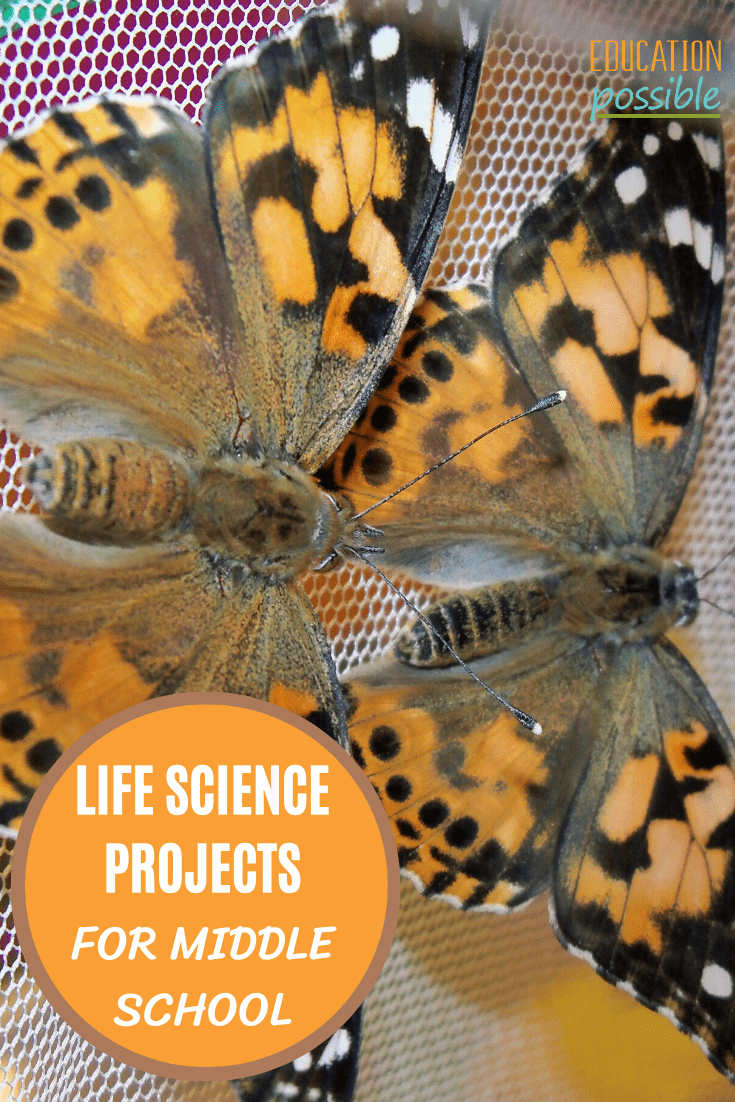
Middle School Physical Science Lessons
Use these fun activities to learn about catapult trajectory .
Have you done any lever experiments for middle school yet? I love it when kids discover that levers are everywhere, including scissors, see-saws, crowbars, and nail clippers.
If you are working on physical science in your homeschool, then you’ll want to add some of these friction projects to your lesson plans.
Miscellaneous Science Activities for Middle School
Geology rocks and minerals is a fascinating subject that can easily captivate kids.
Use these hands-on activities to help your tweens study weather and climate .
Use this sinkhole experiment during your earth science lessons.
Have fun building a weather station to study the conditions in your area.
Let your tween learn science with Disney Imagineering Videos .
Must-Have Resources for Middle School Science

If you’re looking for even more resources for teaching science to tweens, I’ve got you covered. Here you’ll find curriculum we recommend, tips for making science fun, and helpful ideas for teaching science at home.
What is your favorite middle school science activity?
- Latest Posts

Megan Zechman
@edupossible, latest posts by megan zechman ( see all ).
- Easy Pumpkin Crafts - August 21, 2023
- Middle School Geography Curriculum - August 11, 2023
- Outdoor Geography Activities - August 4, 2023
This looks like a great book! I just added it to our Amazon wishlist… thanks for the review!
Thank you for checking it out!! Hope your kids enjoy it 🙂
Comments are closed.

Science By Sinai
Middle School Science Tips, Ideas, and Resources
Planning Lab Activities for Middle School Science Class
Are you struggling with planning lab activities while teaching middle school science? How do you introduce the lab, execute it, clean up and draw conclusions in one class period?

Karen Sinai
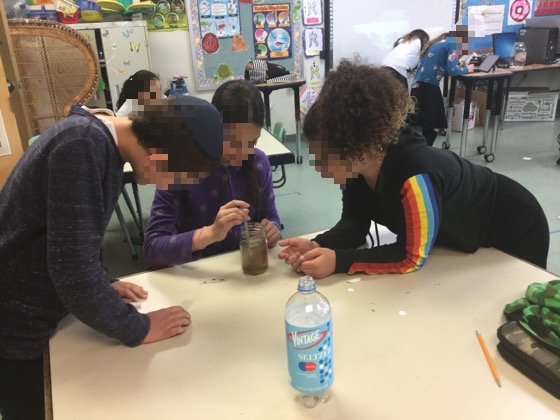
Updated August 28, 2022
I use a method that I call “ backwards lesson planning ” as I am planning lab activities for my multiple, middle school science classes. When I adopted this method I noticed a huge change in my stress level in terms of dealing with large classes of middle school students, materials, safety concerns and overall classroom behavior.
Backwards Lesson Planning
When you sit down to start planning a lab activity, for a 40 minute period or 90 minute period, you should always start with your end goal first. You will start at the end of your class period and work backwards towards the beginning of your class. This time management hack really works! Once you answer the following questions then the rest tumbles into place.
What is Your Final Goal of Doing the Lab?
Ask yourself WHY you are doing this lab activity. Is it something that you found on Pinterest that seemed like it matched the general idea of the unit? Is it something to truly reinforce concepts that you have been teaching? Our class time is limited and there are plenty of examples of “quick and easy, and sometimes dramatic” lab ideas that either have confusing or weak tie-ins to your actual content.
What Conclusions Do You Want Your Students to Draw at The End of the Activity?
This is something that should be thought of as you are looking for the correct lab activity to use for a specific concept. Which aspect of your overall concept is being reinforced during this lab?
You should have an idea of what you would consider the ideal conclusions that you wish students to draw. I sometimes give students a brief lab report template for them to fill out, which gives me an idea of comprehension.
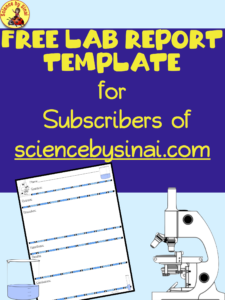
If students are way off base, or are struggling with WHY they did the activity, then the activity needs to be reevaluated.
How Much Time Will the Lab Take to Clean Up?
Most lab accidents happen as students are rushing to clean up fast to get to their next class. They get careless and anxious if the teacher is clearly exhibiting anxiety about the clock. Budget your clean up time at the FRONT END of your planning and stick to it!
If the lab needs to go into another day, or you need to cut out parts of it, so be it. The cleaning part of the lab should not be stressful. This makes the kids act up and can cause apprehension for some students.
How Much Time Will the Lab Activity Take?
As I have mentioned in my other blog posts on time management, ( 10 Tips for Good Time Management in the Science Classroom ), you should always do the lab yourself and multiply the amount of time it took you to do it by at least 2 to 3 times. Students may need to read the directions several times until they comprehend what needs to be done. Plus, they may need time to ask you questions.
This planning will include a point where you will pause the class to do a check-in. Do you have a clear idea in your mind as to when you will give time warnings to the students for each stage of the activity? Make sure you are clock watching during the entire period, even as you are walking around and assisting.
Say things such as “two minutes until we pause to talk“ or “seven minutes until clean up”. This keeps the students aware of the time and their pace.
Do Students Have Enough Background Information to Understand the Activity?
There is nothing worse than starting a lab, and realizing halfway through, that the students have very little or no understanding as to why they are doing the lab! Students should have enough previous knowledge to be able to use the lab to build upon a strong base.
If not, perhaps push the lab off one day and do some concept material.
Do Students Have Written Instructions?
I prefer to have the introduction and lab procedure written out for the students, plus I project it on my whiteboard. I send the procedure and any data charts to the students’ digital science notebooks so that they are ready to go. Quite often I have the students read it the evening before for homework. This way, they come into the lab prepared and ready to go.
Do The Students Have a Clear Understanding of Appropriate Lab Behavior?
Students should have a rubric that explains lab behavior from the first day of school. I prefer to also hang it on the wall of my classroom. Do you have a separate rubric for the specific lab you are doing that day? Students find it very reassuring to know what is expected of them BEFORE they begin.
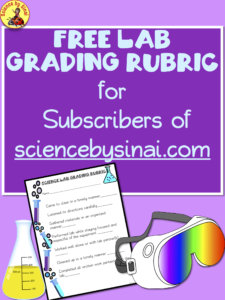
As strange as it may be to start at the end of your class period and work backwards, this method has served me well for many years. Plus, we all know that good planning and time management helps squelch the majority of discipline issues!

Similar Posts
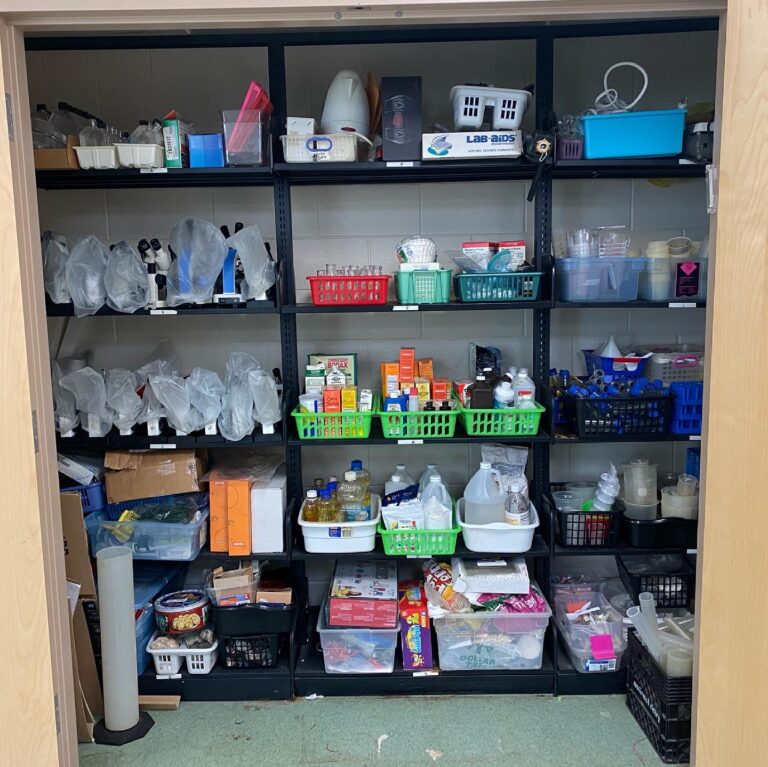
Basic Supplies You Need in Your Science Classroom
Basic Supplies You Need in Your Science Classroom Are you just starting out as a middle school science teacher and not sure what classroom supplies you should have on hand? Did you inherit a classroom from another teacher and you need to start from scratch? Here are what I would consider the basics that every…
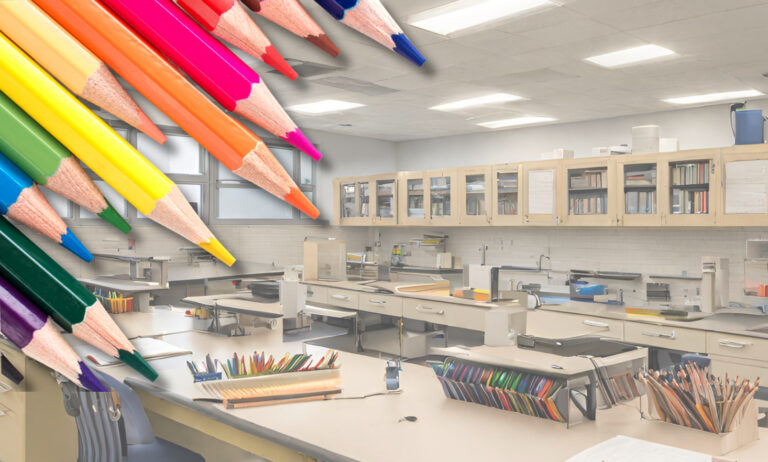
Using Coloring Pages in Middle School Science
Using Coloring Pages in Middle School Science Do you need relaxing, calming activities for your science classroom that still focuses on concepts? Is the noise level climbing in your classroom? Using coloring pages in middle school science may seem a bit unconventional, but it is a powerful tool! Let’s look at how incorporating concept based…

Mistakes I Made as a New Middle School Science Teacher
Mistakes I Made as a New Middle School Science Teacher If I could go back and correct the mistakes I made as a new middle school science teacher, I’m sure my 30+ year teaching journey would have been much smoother! I’m going to be transparent and tell you some of my biggest mistakes with the…
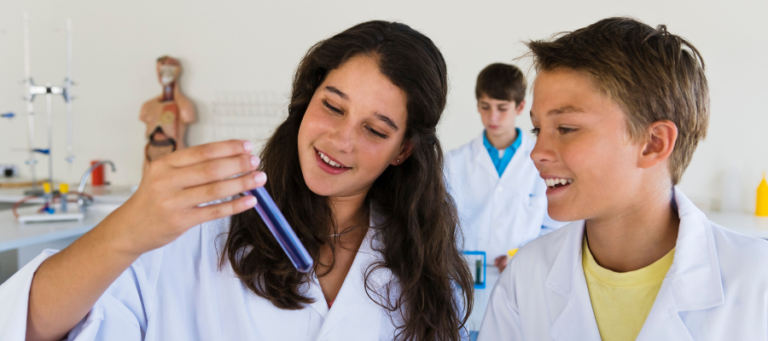
Boost Your Student’s Critical Thinking with CER in Science Class
Boost Your Student’s Critical Thinking with CER in Science Class CER (Claim, Evidence, Reasoning) is a critical thinking framework that encourages students to analyze evidence and draw conclusions that are thorough and appropriate. I have pushed my students for years to think “out of the box“ while trying to pull data together. However, they have…
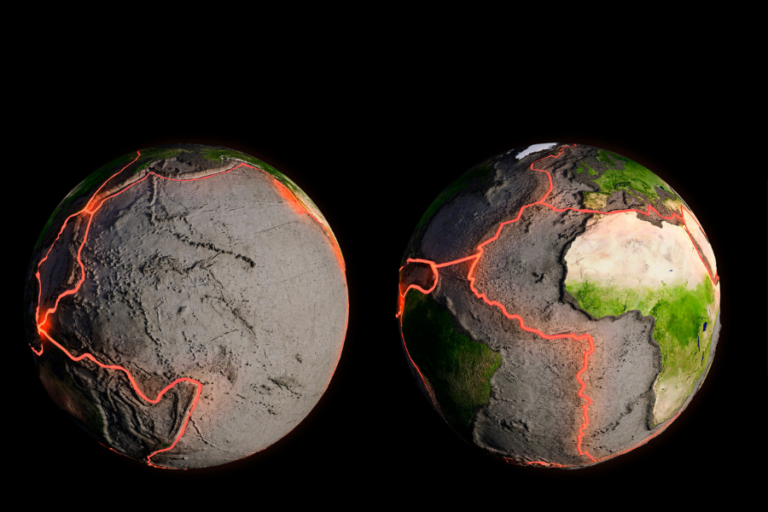
Move the Plates! Teaching Plate Tectonics is Fun
Move the Plates! Teaching Plate Tectonics is Fun Are you teaching plate tectonics and looking for a way for students to manipulate the plates while learning the types of boundaries? Would you like a digital component to add to your earth science unit? Utilizing plate tectonic drag and drop activities with Google Earth analysis helps…

Labs with iPads to Teach Balanced and Unbalanced Forces
Labs with iPads to Teach Balanced and Unbalanced Forces Teaching a “balanced and unbalanced forces” unit(MS-PS2-2) is so much more engaging when students do activities using the features on their iPads! My middle schoolers have a blast using the slow motion feature on their iPad cameras to capture what they call “things smashing into each…
Click here to cancel reply.
Don't subscribe All new comments Replies to my comments Notify me of followup comments via e-mail. You can also subscribe without commenting.

I've created 30 middle school science activities to fill in any absences you might have from your classroom.
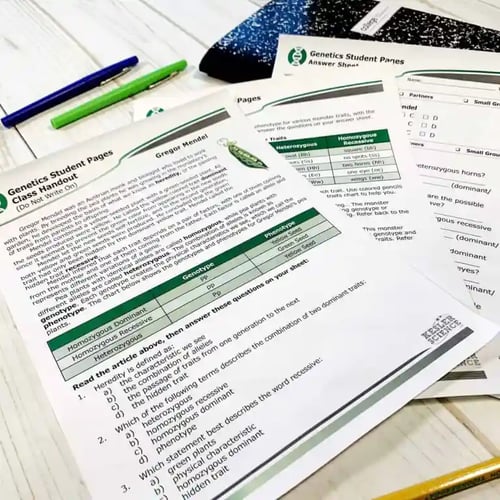
The Problem with Sub Plans
When I was in the classroom, I had challenges finding or creating meaningful things for my students to do when I had to be out. I wanted them to learn and be productive, but I didn't want to overwhelm my substitute. After all, most subs aren't trained to be science teachers.
My experience was that bored, unchallenged middle school students were like predators waiting to pounce on their prey of an unprepared substitute. The students needed solid work to do, a clear understanding of my expectations, and a way to be held accountable for their effort. I needed fail-proof lessons that could be handed to anyone who was asked to take over my classroom unexpectedly.
It wasn't until I left the classroom that I had the time to create a resource that met the following criteria.
- Student-led
- Self-contained (no prior student knowledge necessary)
- Clear and concise directions for the substitute and the students
- Easy behavior feedback system for the substitute
- Distance learning and 1:1 option
- NO student downtime
I'm proud of the sub plan bundle and think it should be included in every middle school science teacher's tool-belt.
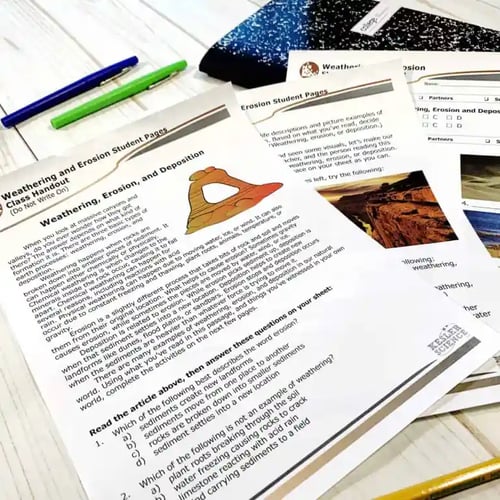
What's Included in These Middle School Science Lessons?
The full sub plan bundle comes with 30 middle school science lessons and includes all of the features listed below.
- Creative activities that remove all downtime
- Substitute directions and letter from you to the sub
- Answer keys
- Letter of instructions for your students
- Behavior checkpoints throughout the lesson
- Engaging warm-up
- Comprehensive lesson over the topic
- Extension activities for early finishers
- Summative assessments
- A class set of handouts for teachers of multiple sections
- Student PDF formatted for use in an LMS such as Google Classroom
- Student PDF formatted for online annotation with products such as Kami
- Google form option and printable answer sheet
- Editable versions of documents
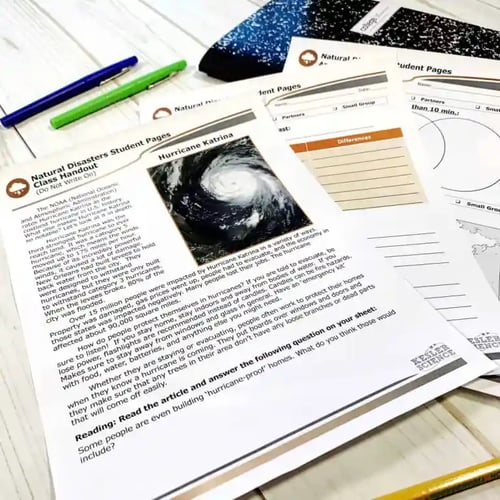
I'm happy to say the science sub plans include files for your remote learning environments such as Google Classroom. Your digital options now include:
- Using an online student answer sheet (in Google Forms) for remote learning or 1-1 classrooms
- Getting guidance for online use with a distance learning PPT and video tutorial
- Assigning a student PDF through your LMS (such as Google Classroom)
- Assigning a student PDF that can be used for online annotation with products such as Kami
How Could You Use Sub Plans In Your Classroom?
The sub-plans are versatile and can be used in countless ways. Here are a few suggestions on how I would use the articles in my own classes:
- Sub Plans - Planning for a sub is a HASSLE! Everything you need to make your substitute look like a veteran teacher is included. They will be appreciative of the clear plans and want to sub for you again and again.
- Distance Learning - Whether you have students working from home or in a 1:1 situation on campus, the science sub plans are a perfect match for a paperless classroom. Student PDFs and the Google Forms response sheet will ensure your students can work on the lesson in any situation.
- Whole-Class Instruction - The science sub plans are stand-alone units that can be integrated into your current instruction and be used to enhance existing lessons.
- ISS or Detention - When students end up in ISS they will need a lesson that's meaningful. Simply print it out or send it to the student digitally.
- Absent or Missing Work - Students miss days and often times a demo or a lab can't be made up. The science sub plans are a great supplement for these situations.

What Topics are Included in the Sub Plans Bundle
The sub plans are complete stand-alone lessons that can be used in class or for distance learning. Below is the comprehensive list of all the articles included in the Sub Plan Bundle . Each is also available for purchase separately.
- Day and Night - Students begin the day and night lesson with a warm-up puzzle. They then read a passage and complete an activity over modeling the day and night cycle of Earth. They also fill out a data table and answer some questions about the day and night cycle. For early finishers, there are extensions to either create a bumper sticker or work through a scenario and questions about day and night. Students end the day and night lesson with an assessment activity or an exit ticket.
- Fossils and Geologic Time - Students begin the fossils and geologic time lesson with a warm-up puzzle. They then read a passage and complete an activity creating their own story outline. They work through an engaging scenario that demonstrates how the organism is ultimately fossilized. For early finishers, there are extensions to either use their story to create a comic or analyze a graphic about the Grand Canyon. Students end the fossils and geologic time lesson with an assessment activity or exit ticket.
- Lunar Cycle - Students begin the lunar cycle lesson with a warm-up puzzle. They then read a passage and complete an activity where they create their own song lyrics about the lunar cycle. For early finishers, there are extensions to either complete a graphic organizer about the lunar cycle or fill in the missing pieces of a smaller graphic organizer. They end the lesson with an assessment activity or exit ticket.
- Natural Disaster - Students begin the natural disaster lesson with a warm-up activity. They then read a passage and complete an activity designing their own hurricane-proof house. For early finishers, there are extensions to either create a Venn diagram about hurricanes and tornadoes or to use a world map and decide which locations are best for hurricanes and tornadoes. They end the lesson with an assessment activity or exit ticket.
- Planets - Students begin the planet's lesson with a warm-up activity. They then read a data table and complete an activity to help understand more characteristics about planets such as gravity and orbits. For early finishers, there are extensions to either create a graph using planet characteristics or sketch a t-shirt design for a new sport they created. Students end the planets lesson with an assessment activity or exit ticket.
- Plate Tectonics - Students begin the plate tectonics lesson with a warm-up graphic organizer. They then read a passage and complete an activity where they label diagrams as divergent, convergent, and transform plate boundaries and describe what is happening at each plate boundary. For early finishers, there are extensions to either analyze a world map and answer some questions about the different plate boundaries, or to come up with a metaphor or simile for each of the plate boundary diagrams. Students end the plate tectonics lesson with an assessment activity or exit ticket.
- Seasons - Students begin the seasons lesson with a warm-up puzzle. They then read a passage and create a model how the Earth and Sun are related to each other during different seasons. Students then write a letter to someone in the southern hemisphere and explain seasons and the length of day and night from their hometown. Students also solve a puzzle using the characteristics of each season. For early finishers, there are extensions to either create a quick quiz about the seasons or illustrate a holiday card for someone in another hemisphere. Students end the seasons lesson with an assessment activity or exit ticket.
- Topographic Maps -Students begin the topographic maps lesson with a warm-up puzzle. They then read a passage and complete an activity where they answer questions and illustrate their own topographic map. For early finishers, there are extensions to either use a topo map to navigate a hiking trail or create a brochure persuading visitors to come to their state park. Students end the topographic maps lesson with an assessment activity or exit ticket.
- Weather - Students begin the weather lesson with a warm-up puzzle. They then read a passage and create their own weather maps from a data set. They also focus on weather-related vocabulary. For early finishers, there are extensions to either create a wanted poster for a particular weather condition or read a short passage about El Nino and La Nina and answer the corresponding questions. Students end the weather lesson with an assessment activity or exit ticket.
- Weathering and Erosion -Students begin the weathering and erosion lesson with a warm-up puzzle. They then read a passage and match weathering, erosion, and deposition to images. They also create their own infographic. For early finishers, there are extensions to either analyze weather and erosion in the Grand Canyon or create a comic strip detailing weathering, erosion, and deposition. Students end the weathering and erosion lesson with an assessment activity or exit ticket.
- Atoms -Students begin the atoms lesson with a warm-up puzzle. They then read a passage and complete an activity that walks them through the characteristics of atoms. They also build their own atoms on the answer document. For early finishers, there is an extension to analyze valence electrons and how they related to the periodic table. Students end the atoms lesson with an assessment activity or exit ticket.
- Balancing Chemical Equations - Students begin the balancing chemical equations lesson with a warm-up puzzle. They then read a passage and complete an activity where they determine if equations are balanced or unbalanced. For early finishers, there is an extension to balance chemical equations.
- Electric and Magnetic Forces - Students begin the electromagnetic energy lesson with a warm-up activity. They then read a passage and complete an activity about an electromagnetic experiment. Students also build a graphic organizer for electromagnetic vocabulary such as electricity, conductor, insulator, magnet, magnetism, and magnetic field. For early finishers, there are extensions to either analyze an experiment or create a list of daily items that use electricity, magnetism, or both. Students end the electric and magnetic forces lesson with an assessment activity or exit ticket.
- Energy Transformation - Students begin the energy transformations lesson with a warm-up puzzle. They then read a passage and complete an activity where students identify the energy transformations in a set of images. They also fill out a graphic organizer with descriptions and illustrations of common energy transformations. For early finishers, there are extensions to either draw an energy transformation from their daily lives or come up with a list of three transformations they have encountered that week. Students end the energy transformations lesson with an assessment activity or exit ticket.
- Graphing Motion - Students begin the graphing motion lesson with a warm-up puzzle. They then read a passage and complete an activity that analyzes motion graphs. For early finishers, there are extensions to either create their own motion graph or write a short story about one of the existing motion graphs. They finish the lesson with an assessment activity or exit ticket.
- Newton's Laws - Students begin the Newton's Laws lesson with a warm-up puzzle. They then read a passage and complete an activity to match scenarios to the correct law. Students then analyze a diagram and explain how it relates to Newton's Laws. For early finishers, there are extensions to either sketch a Rube Goldberg machine and describe how it relates to Newton's Laws or create a real-life scenario for each of the three laws. Students end the Newton's Laws lesson with an assessment activity or exit ticket.
- Periodic Table - Students begin the periodic table lesson with a warm-up activity. They then read a passage and analyze the periodic table to uncover patterns and characteristics. Students also create their own page for an element book where they describe the properties of their chosen element. For early finishers, there are extensions to either create a fictitious text message conversation about the periodic table or match elements with their properties using a data chart. Students end the periodic table lesson with an assessment activity or exit ticket.
- Potential and Kinetic Energy - Students begin the potential and kinetic energy lesson with a warm-up activity. They then read a passage and complete an activity where they categorize images as potential energy, kinetic energy, or both. Students also calculate potential energy at different heights. For early finishers, there are extensions to either create a song about potential and kinetic energy or create an acrostic poem.
- Properties of Waves - Students begin the properties of waves lesson with a warm-up puzzle. They then read a passage and complete an activity analyzing characteristics of both transverse and longitudinal waves. Students then draw a wave based on a given scenario. For early finishers, there are extensions to either perform an experiment with a balloon or draw out several different waves given an image as a baseline. Students end the properties of waves lesson with an assessment activity or exit ticket.
- Thermal Energy - Students begin the thermal energy lesson with a warm-up activity. They then read a passage and complete an activity where they match images to conduction, convection, or radiation. Students then analyze a diagram answer questions about conductors and insulators. For early finishers, there are extensions to either complete a Venn diagram or sketch a shelter to help insulate penguins. Students end the thermal energy lesson with an assessment activity or exit ticket.
- Adaptations - Students begin the adaptations lesson with a warm-up puzzle. They then read a passage and complete an activity over behavioral and physical animal adaptations in which they illustrate different adaptations. For early finishers, there are extensions to either draw a fictitious plant and animal organism to adapt in a desert habitat, or study Galapagos finch beaks and explain how each of the beaks has adapted to their environments. Students end the adaptations lesson with an assessment activity or exit ticket.
- Biotic and Biotic Factors - Students begin the biotic and abiotic factors lesson with a warm-up activity. They then read a passage and complete an activity over biotic and abiotic factors. Next, they categorize abiotic and biotic factors by looking at a picture of a rainforest and a desert ecosystem. For early finishers, there are extensions to either draw a local ecosystem and list the biotic and abiotic factors or play a creative game. Students end the biotic and abiotic factors lesson with an assessment activity or exit ticket.
- Body Systems - Students begin the body systems lesson with a warm-up puzzle. They then read a passage and complete an activity where they design a booklet and label the main organs and functions of each body system. They then use their booklets to answer questions about different body systems. For early finishers, there are extensions to either describe how the skeletal and muscular system work together to provide movement or describe what body systems need to work together to digest a meal. Students end the body systems lesson with an assessment activity or exit ticket.
- Cell Theory - Students begin the cell theory lesson with a warm-up puzzle. They then read a passage and complete an activity to construct a timeline of the key contributions to the cell theory. Next, students play a cell theory memory game. For early finishers, there are extensions to either pretend they are Robert Hooke and write a letter that describes their emotions to a colleague after looking at cells under a microscope or illustrate what Robert Hooke saw in 1665 as he was looking through his microscope. Students end the cell theory lesson with an assessment activity or exit ticket.
- Dichotomous Keys - Students begin the dichotomous keys lesson with a warm-up puzzle. They then read a passage and complete an activity that uses a dichotomous key to identify unknown creatures and name them. For early finishers, there are extensions to either create their own dichotomous key using classroom objects, or analyze the word dichotomous and draw a sketch to help them remember it. Students end the dichotomous keys lesson with an assessment activity or exit ticket.
- Ecosystems - Students begin the ecosystems lesson with a warm-up puzzle. They then read a passage and create an infographic from the ecosystems article. Next, they use a graphic organizer to break down some of the ecosystems vocabulary such as biome, predator, prey, producer, and consumer. For early finishers, there are extensions to either choose a biome and describe the characteristics of the ecosystem or complete a Venn diagram about ecosystems and biomes. Students end the ecosystem lesson with an assessment activity or exit ticket.
- Food Webs - Students begin food webs lesson with a warm-up activity. They then read a passage and complete an activity with trading cards about food chains and food webs in different ecosystems. For early finishers, there are extensions to either complete a food web puzzle or analyze a food chain and describe the organism's relationship as predator/prey or consumer/producer.
- Genetics - Students begin the genetics lesson with a warm-up puzzle about DNA. They then read a passage and complete an activity where they analyze a table and answer questions about homozygous dominant, heterozygous, and homozygous recessive traits. For early finishers, there are extensions to either build monster parents and describe the genotype and phenotype of different traits or illustrate a monster parent with some given traits. Students end the genetics lesson with an assessment activity or exit ticket.
- Photosynthesis - Students begin the photosynthesis lesson with a warm-up puzzle. They then read a passage and complete an activity over the photosynthesis formula with cards. Next, they create a short skit that requires them to use key vocabulary: chloroplast, light energy, carbon dioxide, water, glucose, and oxygen. For early finishers, there are extensions to either analyze a table about photosynthesis and color the picture of a plant or create a diagram that shows the products and reactants during photosynthesis. Students end the photosynthesis lesson with an assessment activity or exit ticket.
- Prokaryotic and Eukaryotic Cells - Students begin the prokaryotic and eukaryotic cells lesson with a warm-up puzzle. They then read a passage and complete a Venn diagram about prokaryotic and eukaryotic cells. Next, they create jerseys for cell "teams" and create team members based on the characteristics of each type of cell. For early finishers, there are extensions to either color code the two different cells or create an acrostic poem about them. Stop worrying about having to create engaging lessons while you're away. Purchase the Sub Plan Bundle here .
Download Over $100 in FREE Resources For Middle School Science
Simply create a login below and gain immediate access to a selection of our Kesler Science product line worth $100 - for FREE. There's a full version of every product type! You'll also join tens of thousands of middle school science teachers who receive timely tips and strategies straight to their inbox.

Life Science Lessons Ecosystems & Ecology, Structure of Life, and Body Systems

Earth Science Lessons Earth Science, Space Science, and Weather

Physical Science Lessons Chemistry, Energy, and Force & Motion

Teaching Strategies & Ideas Middle School Science Strategies & Ideas
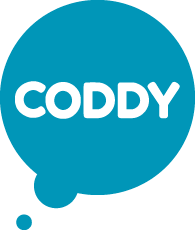
- Belgorod-Dniester
- Beloozersky
- Blagoveshchensk
- Cherepovets
- Chernomorsk
- Chesnokovka
- Dnepropetrovsk
- Dolgoprudny
- Kalach-na-Donu
- Kaliningrad
- Khanty-Mansiysk
- Kostomuksha
- Krasnogorsk
- Krasnoyarsk
- Krasnoznamensk
- Makhachkala
- Mikhailovsk
- Mineral water
- Naro-Fominsk
- Nevinnomyssk
- Nizhny Novgorod
- Nof HaGalil
- Novopavlovsk
- Novorossiysk
- Pervouralsk
- Petropavlovsk-Kamchatsky
- Pribrezhnyy
- Rostov-on-Don
- Saint-Petersburg
- Sergiev Posad
- Shcherbinka
- Sovetskaya Gavan
- Velikiy Novgorod
- Yuzhno-Sakhalinsk

Olympiad programming for students
Participation in the Olympiad is a great way to approve yourself and show your knowledge, as well as strengthen your position in future admission шт higher educational institutions of a technical profile.
At present, Russia annually hosts hundreds of competitions for students in more than twenty disciplines, which includes four stages: school, municipal, regional and final. Anyone can take part in the school stage, but for passing to the next (municipal, regional, and even more so final), serious systematic preparation is needed. Winners and prize-winners of such events receive cash prizes and benefits when enrolling in educational institutions.
For example, Moscow winners of the All-Russian Olympiad for schoolers receive a prize of 200 thousand rubles, prize-winners - 100 thousand, and winners and prize-winners of international olympiads - 250 thousand, 500 thousand and 1 million rubles for 3, 2 and 1 places, respectively. In the Moscow Region, winners and prize-winners of the All-Russian Olympiad are awarded from 100 to 300 thousand rubles, prize winners at international olympiads - from 100 to 500 thousand.
In addition to monetary incentives, winners of the final stage of the All-Russian Olympiad for schoolers can enter higher education institutions without entrance exams. Such privileges are annually enjoyed by dozens of school graduates.
Preparation for a successful performance at such olympiads requires serious preparation, which takes a long time. If the goal is to win the final stage of the All-Russian Olympiad and participate in the International Olympiad in grades 9-10, then you need to start classes a few years before this stage. As a rule, prize-winners and winners of International Olympiads, planning to perform from 9-10 grades, begin to study from 6-7 grades. At the same time, it is desirable to have basic knowledge in computer science already at the beginning of intensive studies. In other words, the sooner the child begins an in-depth acquaintance with the programming world, the more chances there will be for a successful performance at the Olympiad of the appropriate level and the easier it will be for him to build an individual strategy for preparing for the most difficult stages.
Is it possible to prepare for the Olympics in the framework of the school program in computer science?
No, and for several reasons at once:
• Firstly, everyone who has at least once seen examples of olympiad assignments in computer science imagines the abyss between the level of a comprehensive school and the level of all-Russian olympiads. Many fairly simple assignments for middle school students are not provided for even in high school;
• secondly, the educational programs themselves, even constantly updated, do not keep up with the development of technology. Some languages used in textbooks are hopelessly outdated, others are new, but unused;
• thirdly, even with a modernized educational program, the number of hours devoted to computer science is negligible, and even the introduction of electives contributes little to solving this problem. Hours of preparation will not be enough, not to mention the fact that a teacher with a heavy load may not physically have enough time to conduct an intensive elective.
Therefore, the participants of the Olympiads give attention to self-preparation: they study specialized literature, look for information on sites and forums, solve sample tasks from previous Olympiads. However, preparing alone is much more difficult, and such preparation does not guarantee success, since there is no main element - feedback, control over the development of the program. The ability to communicate with teachers and comrades, receive feedback in the learning process, as well as new knowledge, significantly increases the productivity of training, and also makes the process of mastering the necessary material less stressful and more comfortable.
In this regard, especially for everyone who wants to participate and win in computer science olympiads, CODDY school has developed an educational course “Olympiad programming”. The course lasts from 3 months for students aged 13-16 years.
The course program includes:
• learning the basics of programming in Python;
• development of effective programs for solving problems;
• solving typical problems of the All-Russian Olympiad for schoolchildren in computer science (programming) for grades 5-7 in Python;
• a workshop in solving complex algorithmic problems;
• analysis of typical errors that occur when writing code;
• mastering the basics of code refactoring and much, much more ...
Graduates of the "Olympiad programming for schoolers" course will be ready to solve olympiad tasks in computer science, and they will also work out the most complex topics and algorithmic tasks, which will lay the foundation for successful participation in the final stage of All-Russian Olympiads for schoolchildren.
For training in the course program, basic knowledge of the Python language is necessary. You can check the level of knowledge of programming skills in Python by passing a special test below:
System requirements
Please be sure your computer is suitable for the course. You can find our recommendations here .
Programs to instal for "Olympiad programming for students" course.
Download here.

Course duration:
from 3 modules (months), from 24 hours*.
individually online.
from $19.5/hr individually online. *The course is designed for children 13 years and older. However, depending on your child's level and interests, the age may vary. Also, keep in mind that children of different ages may have different preferences for teaching methods and may require an individualized approach.
- Online in groups
- Online individually

Python game development , Creating Games in Roblox Studio , Olympiad programming for students , Python bots , Web development

Python game development , Javascript programming , Olympiad programming for students , Programming in Python3 , Cybersecurity , Ethical hacker
Our classes

- Krok (Moscow, m. Ploshchad Ilicha, Volochaevskaya St., 5, building 1)
- FINAM (Moscow, m. Pushkinskaya, Nastasinsky per., 7, p.2)
- Glowbyte (Moscow, m. Kurskaya, Nizhny Susalny Lane, 5, p. 19)
- Coworking Grow Up (Moscow, Voikovskaya metro station, 6-A Cosmonaut Volkova St.)
- Library №128 (Moscow, m. Tekstilshchiki, 8th Tekstilshchikov, 14)
- Children's Center Da-Triz (m. Prospekt Vernadskogo, Prospekt Vernadskogo, d. 62a, p. 2)
- GBOU School number 7 (m. Prospekt Vernadskogo, Krupskaya St., 17)
- CODDY office (Moscow, m. Polyanka, Bolshaya Polyanka st., 2/10 p. 1)
- Nextouch (Moscow, m. Tekstilshchiki, Volgogradsky pr., D. 42, building 5, Technopolis Moscow)
- Gallery "Zagorje" (metro Tsaritsyno, Lebedyanskaya str., 24, building 2)
- Electromuseum (MTC Rostokino, Rostokinskaya St., 1)
- QIWI (m. Chertanovo North, d. 1a, building 1)
- School number 1535 (Moscow, m. Sportivnaya, Usachev st., 50)
- Tax College (Moscow, m. Polezhaevskaya, Ul. 3rd Khoroshevskaya, 2, p. 1)
- KIDSTARTER (Moscow, Sokolniki metro station, 17/16 Shumkina St.)
- Technopark Skolkovo (Moscow, the territory of the Innovation Center "Skolkovo", Bolshoi Boulevard, 42, building 1)
- SAP (Moscow, Kosmodamianskaya nab., D. 52/7)
- Children's Center CODDY (Moscow, m. Ozernaya / Ochakovo Station, Przhevalsky St., 2)
- KC "Architects" (Moscow, m. Molodezhnaya, 23, Partizanskaya str.)
- Okinoy Development Center (NCC, Nizhny Novgorod, 2nd Graivoronovsky passage, 42, building 1.)
- ADANT (Moscow, m. Profsoyuznaya, Nakhimovsky Prospect, 32, office 1226)
- Rambler Group (Moscow, m. Tulskaya, Varshavskoye sh., D. 9, p. 1)
- Moscow-City (Moscow, Presnenskaya emb., 8, p. 1, Business Center "Capital City" 3rd floor)
- Moscow, m. Leninsky Prospect, 38A


Top 14 things to do and attractions in Mytishchi
Navigate forward to interact with the calendar and select a date. Press the question mark key to get the keyboard shortcuts for changing dates.
Navigate backward to interact with the calendar and select a date. Press the question mark key to get the keyboard shortcuts for changing dates.
1 St. Basil's Cathedral
2 All-Russian Exhibition Center

3 Kva-Kva Park
4 fest mytishchi drama and comedy theatre, 5 mytishchi arena.

Track your travel spending and split costs with friends
Plan your trip. Keep your budget organized. Split the cost between tripmates. Wanderlog does it all.

6 Mytishchi Park Of Culture And Leisure
7 monument to the hero of the soviet union raspopova nina maksimovna, 8 teatr kukol ognivo, 9 mytishchi history and art museum, 10 mytishchinskaya kartinnaya galereya, 11 perlovskiy park, 12 xl outlet, 13 interactive einstein museum, 14 zamaniya, family adventure park, what's the weather like in mytishchi.
It depends on when you visit! We've compiled data from NASA on what the weather is like in Mytishchi for each month of the year: see the links below for more information.
- Weather in Mytishchi in January
- Weather in Mytishchi in February
- Weather in Mytishchi in March
- Weather in Mytishchi in April
- Weather in Mytishchi in May
- Weather in Mytishchi in June
- Weather in Mytishchi in July
- Weather in Mytishchi in August
- Weather in Mytishchi in September
- Weather in Mytishchi in October
- Weather in Mytishchi in November
- Weather in Mytishchi in December
Explore nearby places
- Lesnyye Polyany
- Dolgoprudny
- Zagoryanskiy
- Ptitsefabriki
- Pekhra-Pokrovskoye
- Ivanovskoye
- Bratovshhina
- Likino-Dulevo
All related maps of Mytishchi
- Map of Mytishchi
- Map of Korolev
- Map of Zdravnitsa
- Map of Nagornoye
- Map of Yubileyny
- Map of Cherkizovo
- Map of Boltino
- Map of Pirogovo
- Map of Pogorelki
- Map of Tarasovka
- Map of Sorokino
- Map of Lesnyye Polyany
- Map of Povedniki
- Map of Ostashkovo
- Map of Oboldino
- Map of Zhostovo
- Map of Suponevo
- Map of Dolgoprudny
- Map of Zagoryanskiy
- Map of Izmaylovo
- Map of Moskovsky
- Map of Ptitsefabriki
- Map of Pekhra-Pokrovskoye
- Map of Ivanovskoye
- Map of Komyagino
- Map of Yuryevo
- Map of Bratovshhina
- Map of Fedoskino
- Map of Danki
- Map of Shatura
- Map of Likino-Dulevo
Mytishchi throughout the year
- Mytishchi in January
- Mytishchi in February
- Mytishchi in March
- Mytishchi in April
- Mytishchi in May
- Mytishchi in June
- Mytishchi in July
- Mytishchi in August
- Mytishchi in September
- Mytishchi in October
- Mytishchi in November
- Mytishchi in December
Looking for day-by-day itineraries in Mytishchi?
Get inspired for your trip to Mytishchi with our curated itineraries that are jam-packed with popular attractions everyday! Check them out here:
- 1-Day Mytishchi Itinerary
- 2-Day Mytishchi Itinerary
- 3-Day Mytishchi Itinerary

- Itinerary + map in one view
- Live collaboration
- Auto-import hotels and reservations
- Optimize your route
- Offline access on mobile
- See time and distance between all your places

IMAGES
VIDEO
COMMENTS
Our middle school projects are written and tested by scientists and are specifically created for use by students in the middle school grades. Students can choose to follow the science experiment as written or put their own spin on the project. For a personalized list of science projects, middle schoolers can use the Science Buddies Topic ...
Science Buddies' middle school science projects are the perfect way for middle school students to have fun exploring science, technology, engineering, and math (STEM). Our middle school projects are written and tested by scientists and are specifically created for use by students in the middle school grades. ... The assignments use Science ...
Middle School Projects, Lessons, Activities. (1,253 results) Science Buddies' middle school science projects are the perfect way for middle school students to have fun exploring science, technology, engineering, and math (STEM). Our middle school projects are written and tested by scientists and are specifically created for use by students in ...
Learn more: Flying Tea Bag. 8. Egg Float Experiment. In this captivating middle school science project, students will unlock the mysteries of density and water displacement while discovering the fascinating properties of eggs. Learn more: Egg Float Experiment. 9. Popsicle Stick Chain Reaction.
2-LS2-1 . Plan and conduct an investigation to determine if plants need sunlight and water to grow. Free science lesson plans designed to engage students through hands-on experiments and activities. Chemistry, life sciences, physics, engineering and more, for elementary, middle and high school teachers.
Middle School Science Projects. (909 results) Science Buddies' middle school science projects are the perfect way for middle school students to have fun exploring science, technology, engineering, and math (STEM). Our middle school projects are written and tested by scientists and are specifically created for use by students in the middle ...
Whether you're looking for a few hours of easy science fun, or a more in-depth school or science fair assignment, Science Buddies makes it easy for 6th, 7th and 8th grade students to find the perfect project! Over 1,500 experiments to choose from. Search by subject, difficulty, time, cost and materials. Experiments include step-by-step ...
Our middle school projects are written and tested by scientists and are specifically created for use by students in the middle school grades. Students can choose to follow the science experiment as written or put their own spin on the project. For a personalized list of science projects, middle schoolers can use the Science Buddies Topic ...
Science Lesson Plans for Middle School. Here you'll find a curated collection of science lesson plans for 6th, 7th, and 8th grade. Many of our activities list connections to the Next Generation Science Standards. 9486.
This allowed them to let their creativity kick in and, as a result, the projects have been so much better! There are 10 major STEM projects that I do in middle school and I have broken them down into three categories: physical science, life science and environmental science. All of the projects involve very little extra materials and I promote ...
26) Make Ice Cream in a Ziploc Bag _ Such a great hot day activity with a lot of science to discuss. 27) Make Slime! - Instant crowd pleaser! 28) Make Puffy Slime using Shaving Cream - Not as stretchy but a fun, great smelling alternative to regular slime. 29) Make bubble experiments -Everyone loves bubbles!
Welcome to Middle school Earth and space science! 2:51. In this course, you'll explore the wonders of our planet and the universe beyond. From the water cycle to plate tectonics, learn about the different processes that shape our world. Learn more.
Welcome to Middle school physics! 1:58. In this course, you'll develop a foundation in the physical laws that govern our world. From forces and motion to energy and waves, learn about the principles that explain how and why things work the way they do. Learn more.
Then, when we talked about science, it would be about everything we just did. Sign up for Free Labs. Transform your middle school science classroom with more experiments. Engaging Science Labs is a collection of hands-on activities, labs, and games.
Our videos, coursework, and many hands-on STEM activities will begin to prepare your middle schooler for the independence of high school. At the same time, it will foster the growth of their imaginations as they are learning about the world around them. Inspiring a love for STEM-based learning can begin at any age, but middle school is a great ...
Chemistry Activities for Middle School. Help your middle schooler understand the science behind a chemical change with these chemical reaction experiments. One of the best known (and go-to) projects for older kids has to be the DIY volcano, so have some fun with these hands-on volcano activities. If you are looking for how to incorporate simple ...
Student examples of the STEM Seed Dispersal project. They are crazy creative! Science Activities to Do Outside Involving Animals. Find Animal Homes Adapting to Humans - Animal Homes Near Humans-Backyard or School Scavenger Hunt.This is a free resource on my blog and it involves taking the students outside on a scavenger hunt searching for animal homes that are near humans.
When you sit down to start planning a lab activity, for a 40 minute period or 90 minute period, you should always start with your end goal first. You will start at the end of your class period and work backwards towards the beginning of your class. This time management hack really works! Once you answer the following questions then the rest ...
The full sub plan bundle comes with 30 middle school science lessons and includes all of the features listed below. Creative activities that remove all downtime. Substitute directions and letter from you to the sub. Answer keys.
• Firstly, everyone who has at least once seen examples of olympiad assignments in computer science imagines the abyss between the level of a comprehensive school and the level of all-Russian olympiads. Many fairly simple assignments for middle school students are not provided for even in high school;
Nidhi Bisht — Google review. St. Basil's Cathedral is a landmark and iconic symbol of Moscow, Russia. Located on Red Square, it is one of the most recognizable and visited cathedrals in the world. The cathedral was built in the 16th century during the reign of Ivan the Terrible, and it is known for its colorful onion domes and unique ...
selection of teaching materials, teaching methods and so on. This paper will start from the actual problems encountere d in. the teaching of ancient Chinese in colleges and universities, analyze ...
Aim: To identify the most effective management decisions and tools aimed at the professional development of teachers. Methodology: The use of theoretical methods: comparative analysis, generalization of literary sources; synthesis, comparison, modeling, construction; empirical: survey, activities included in the IOM; mathematical and statistical methods.